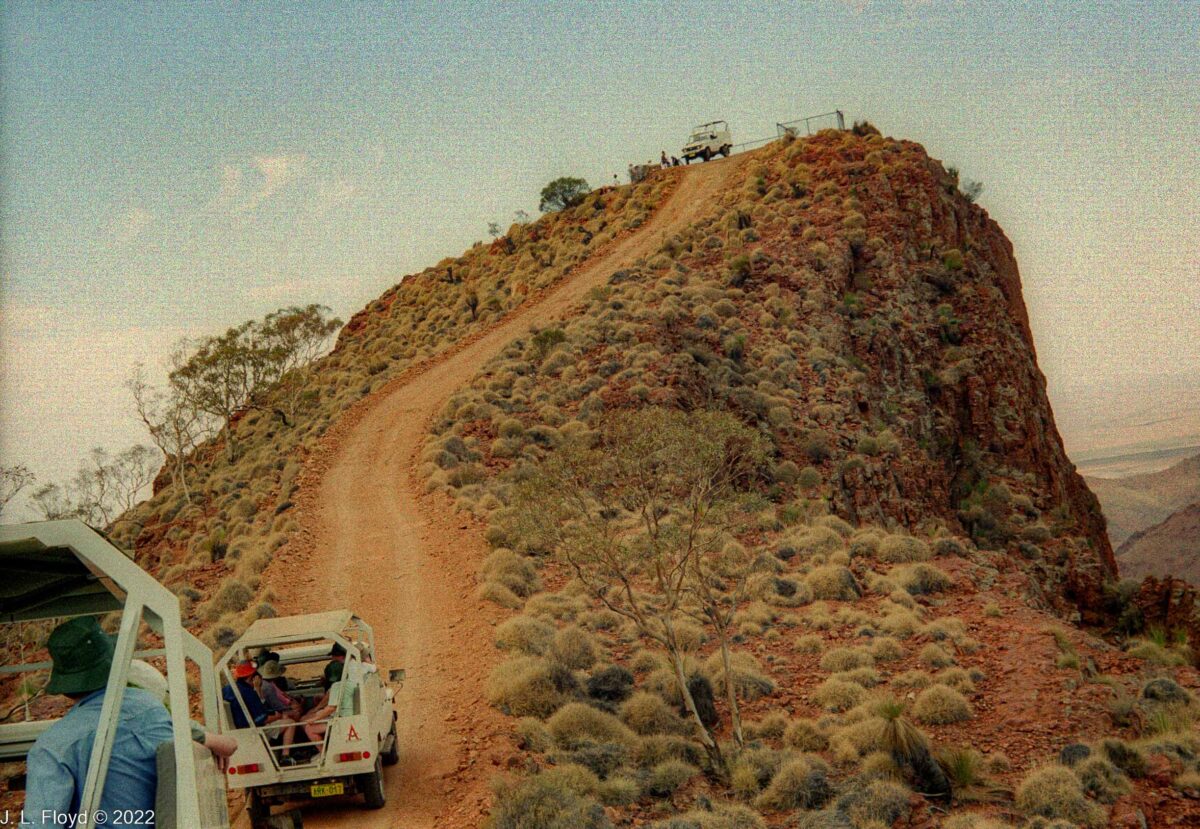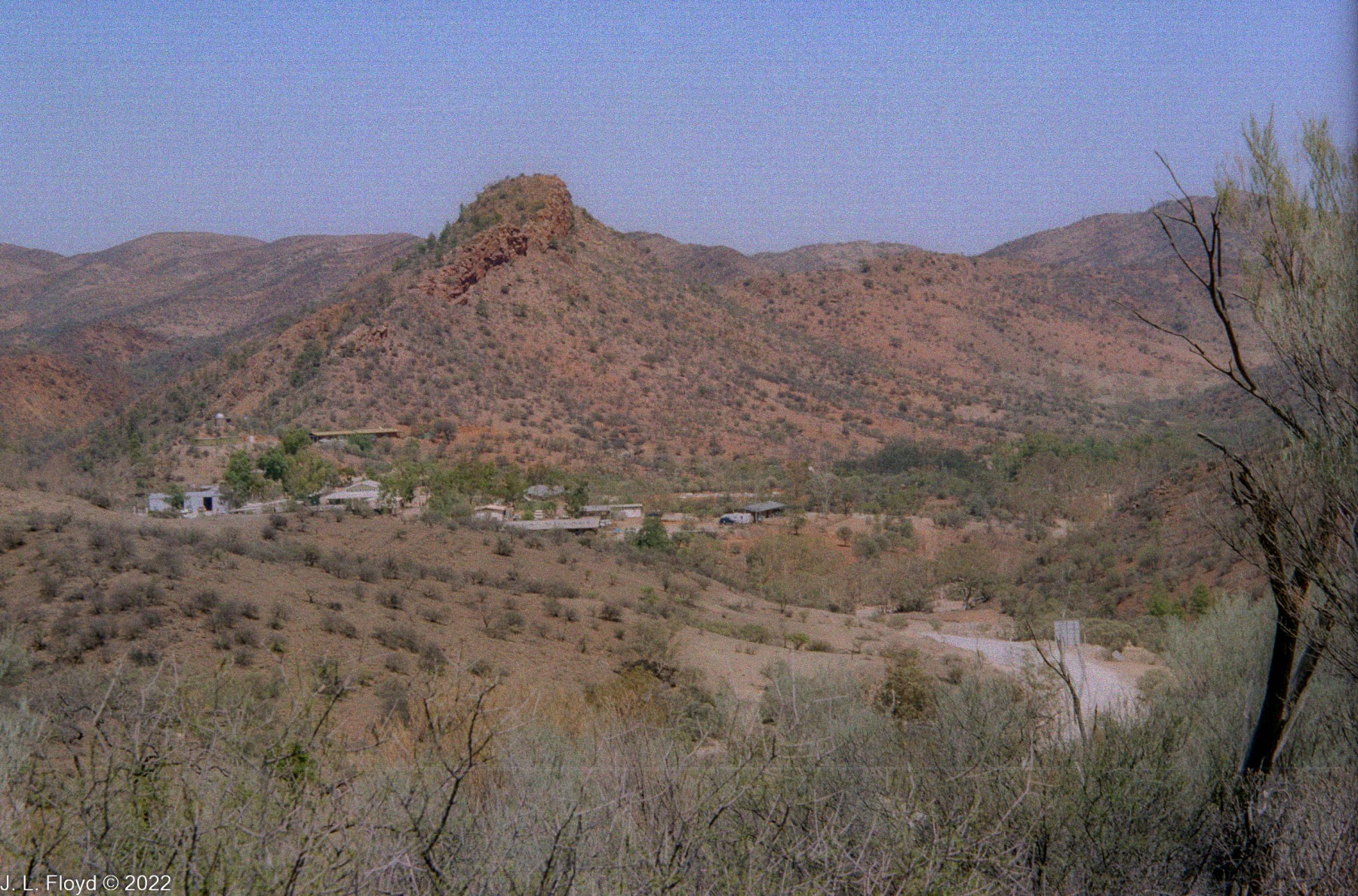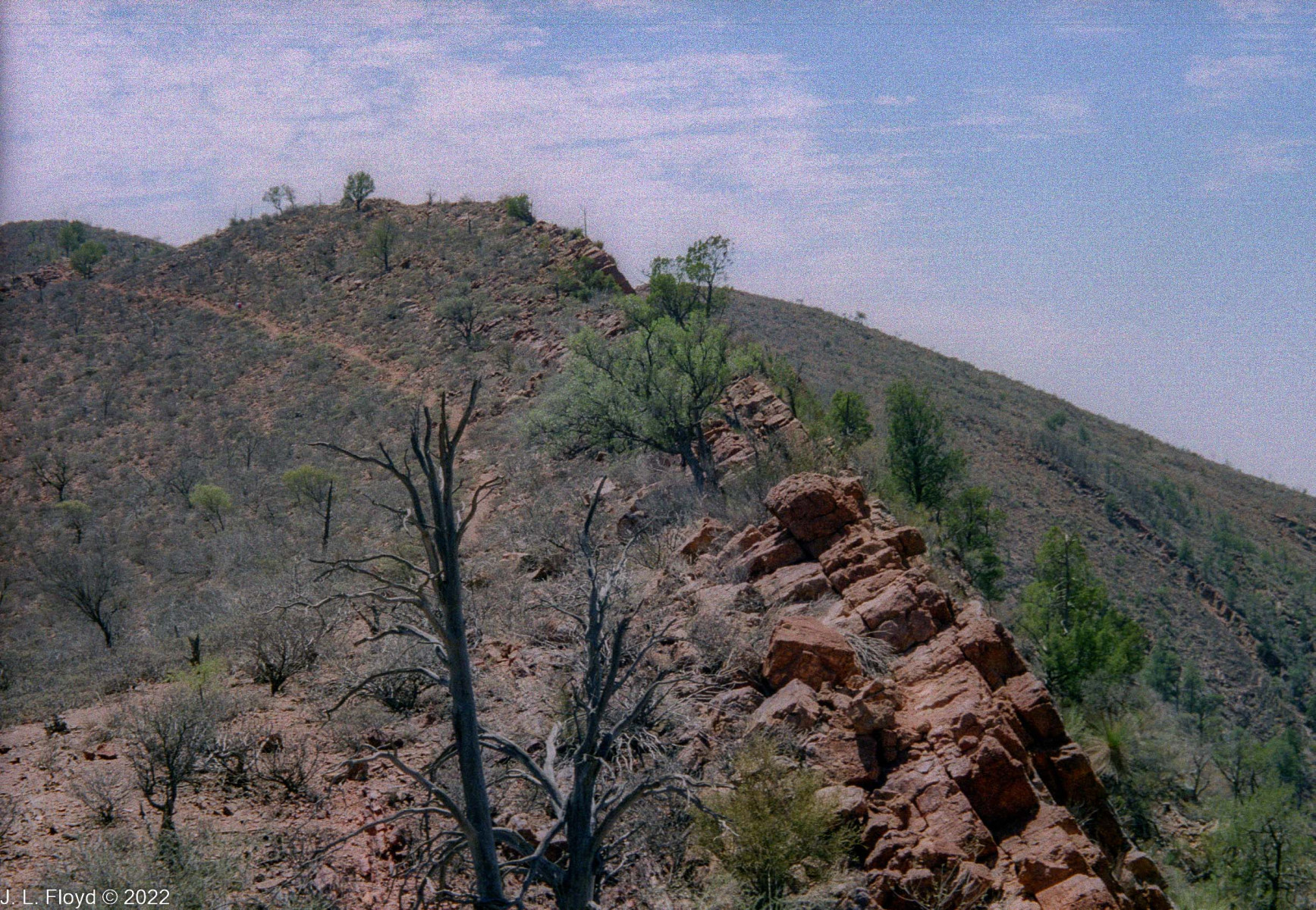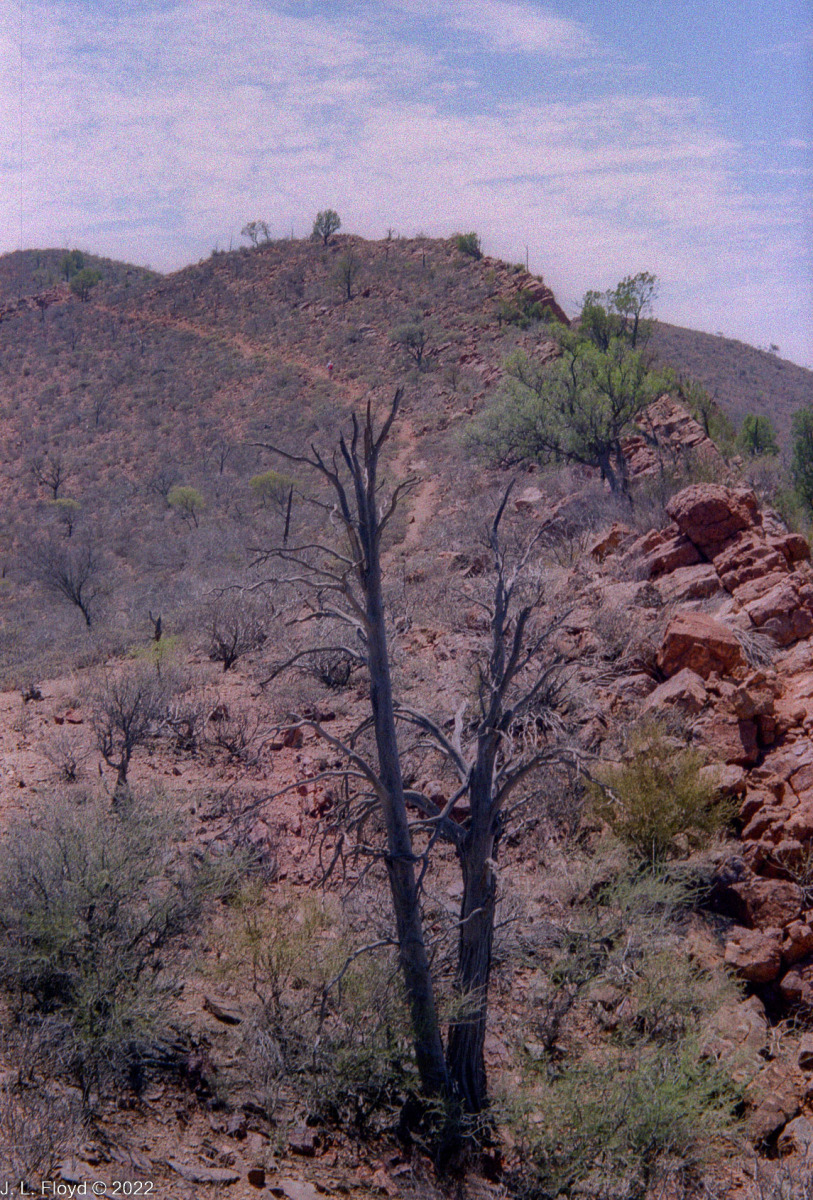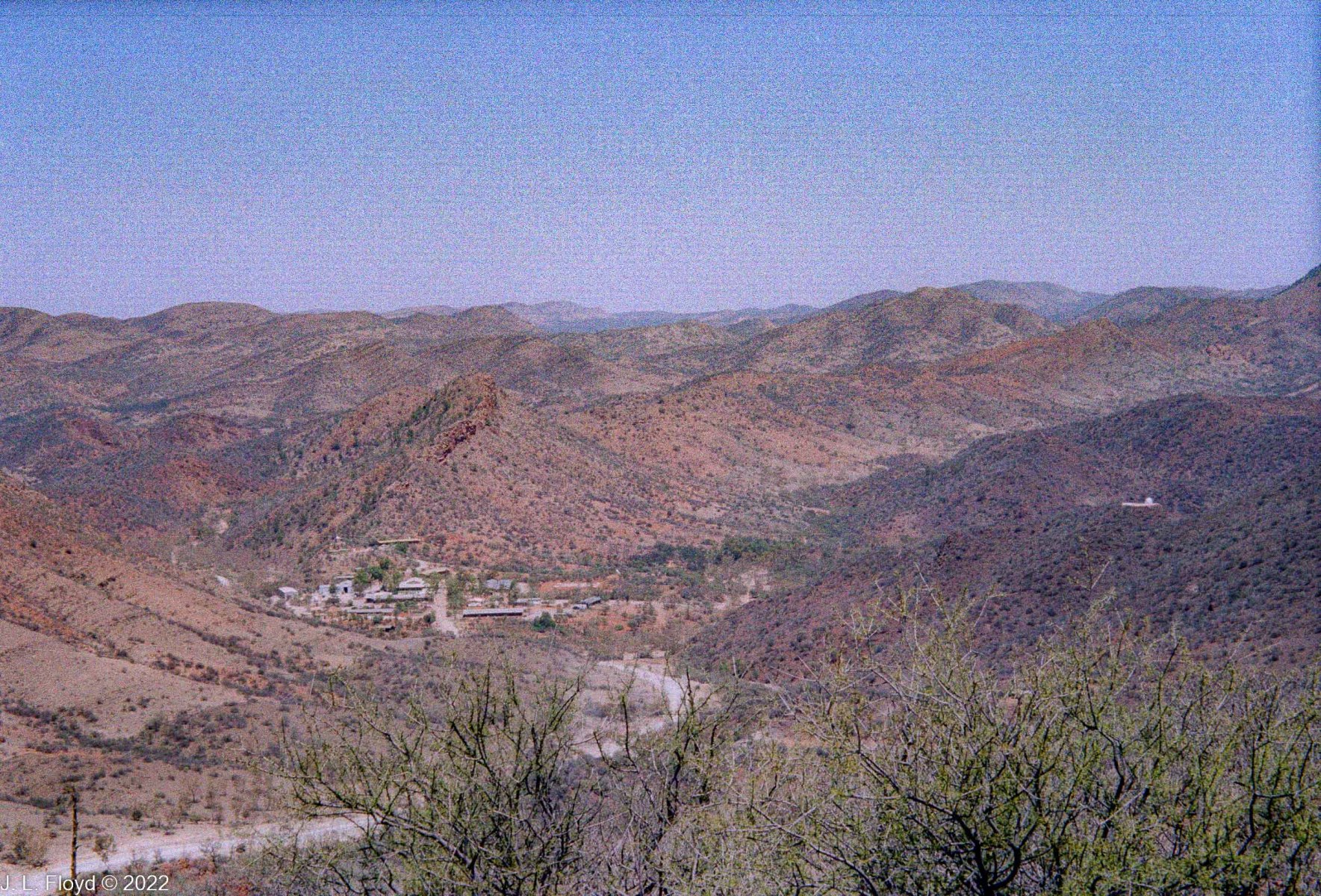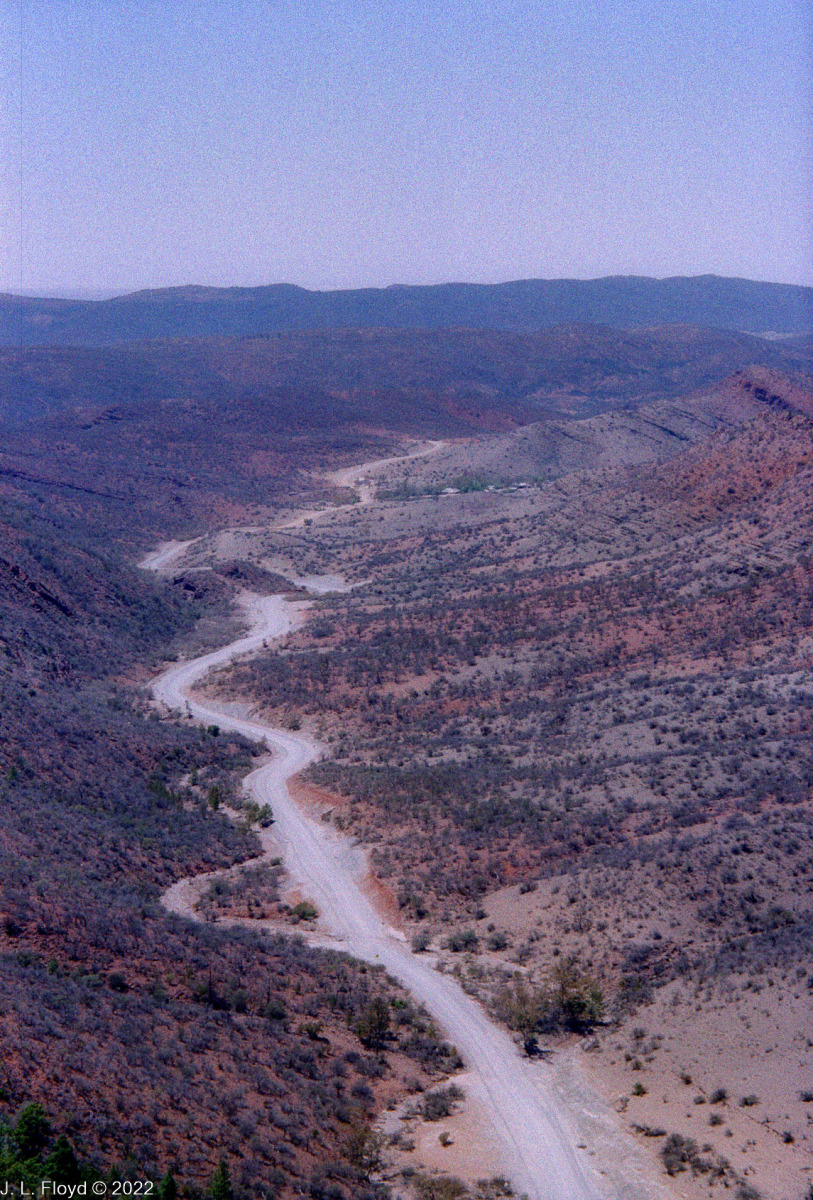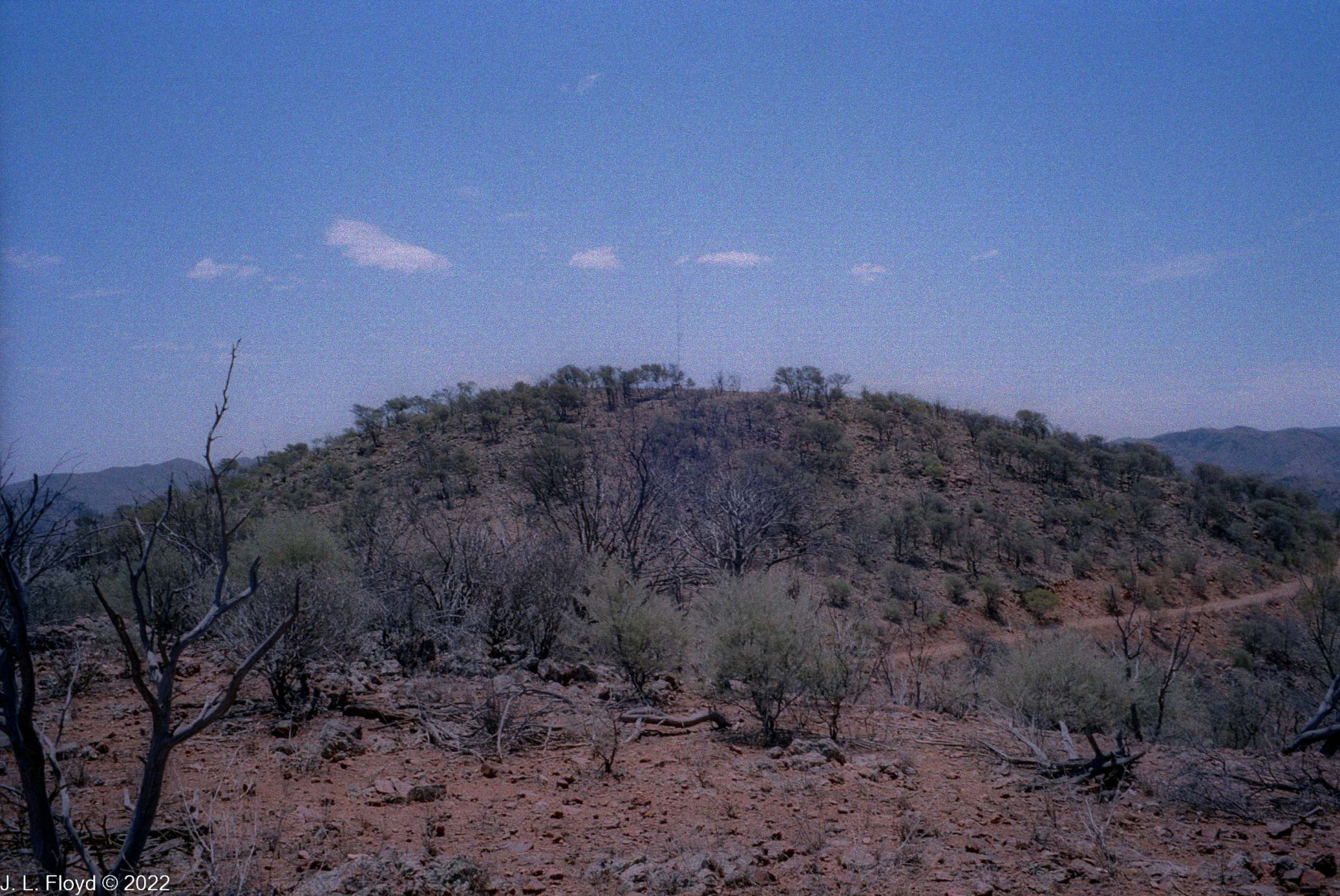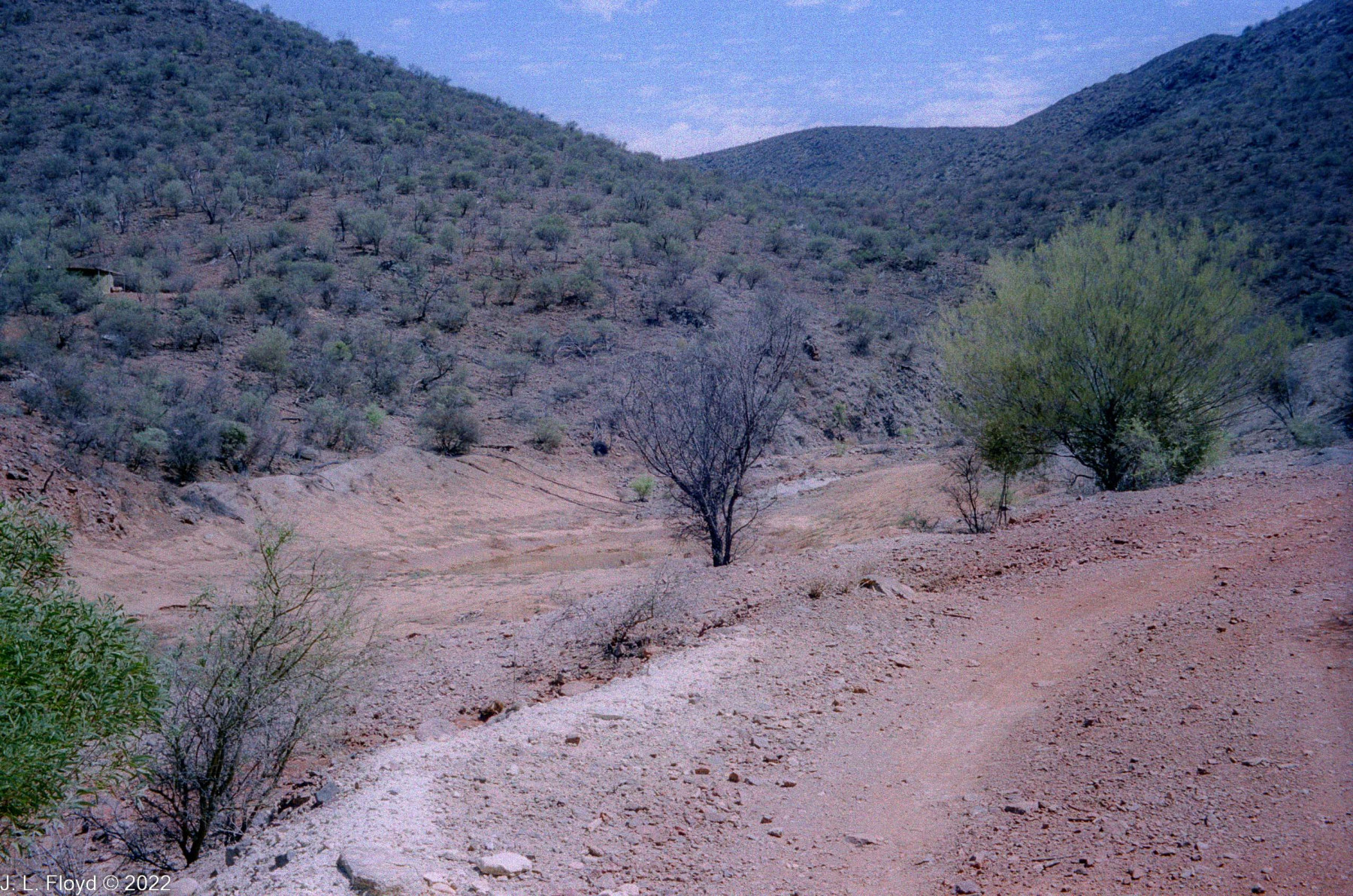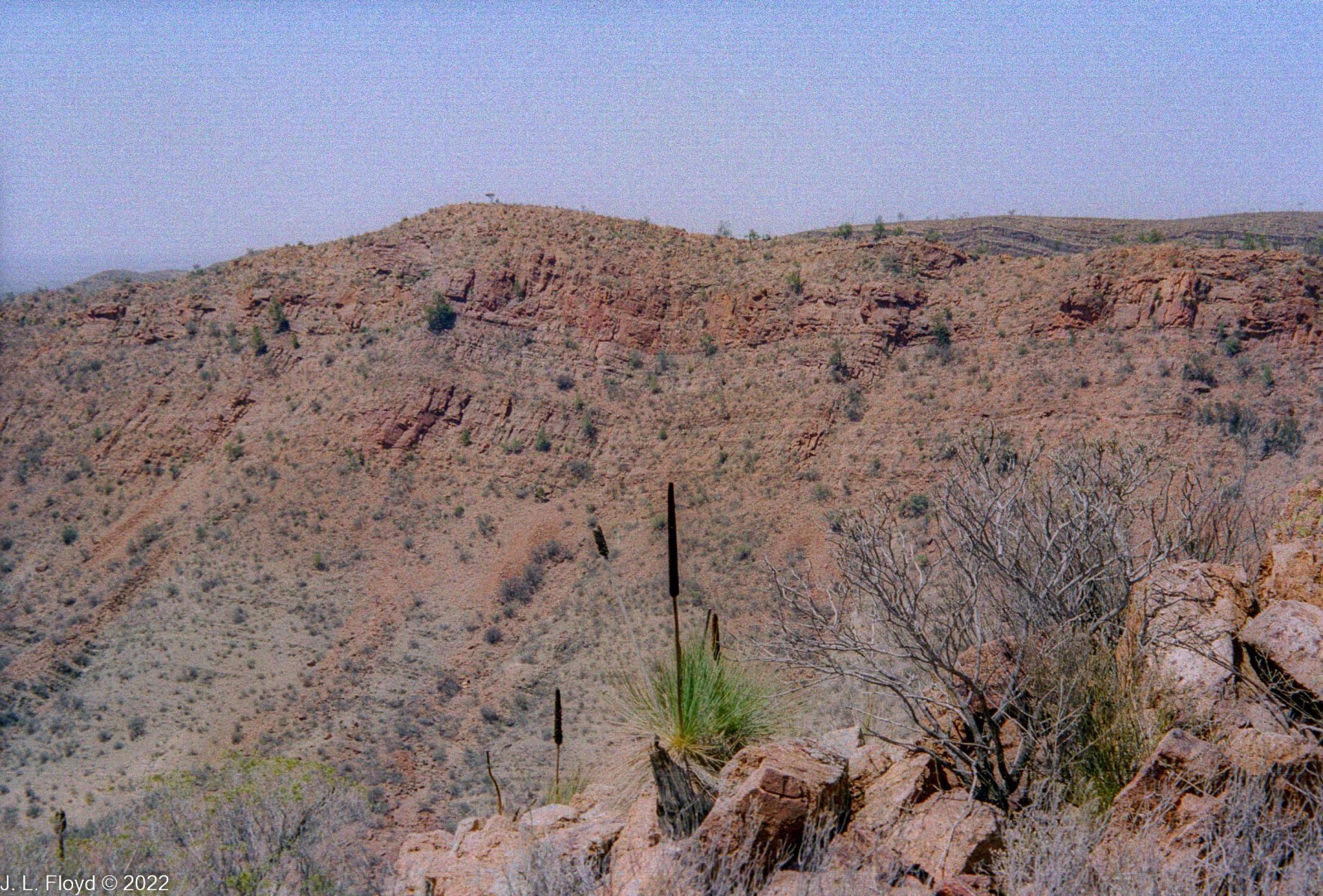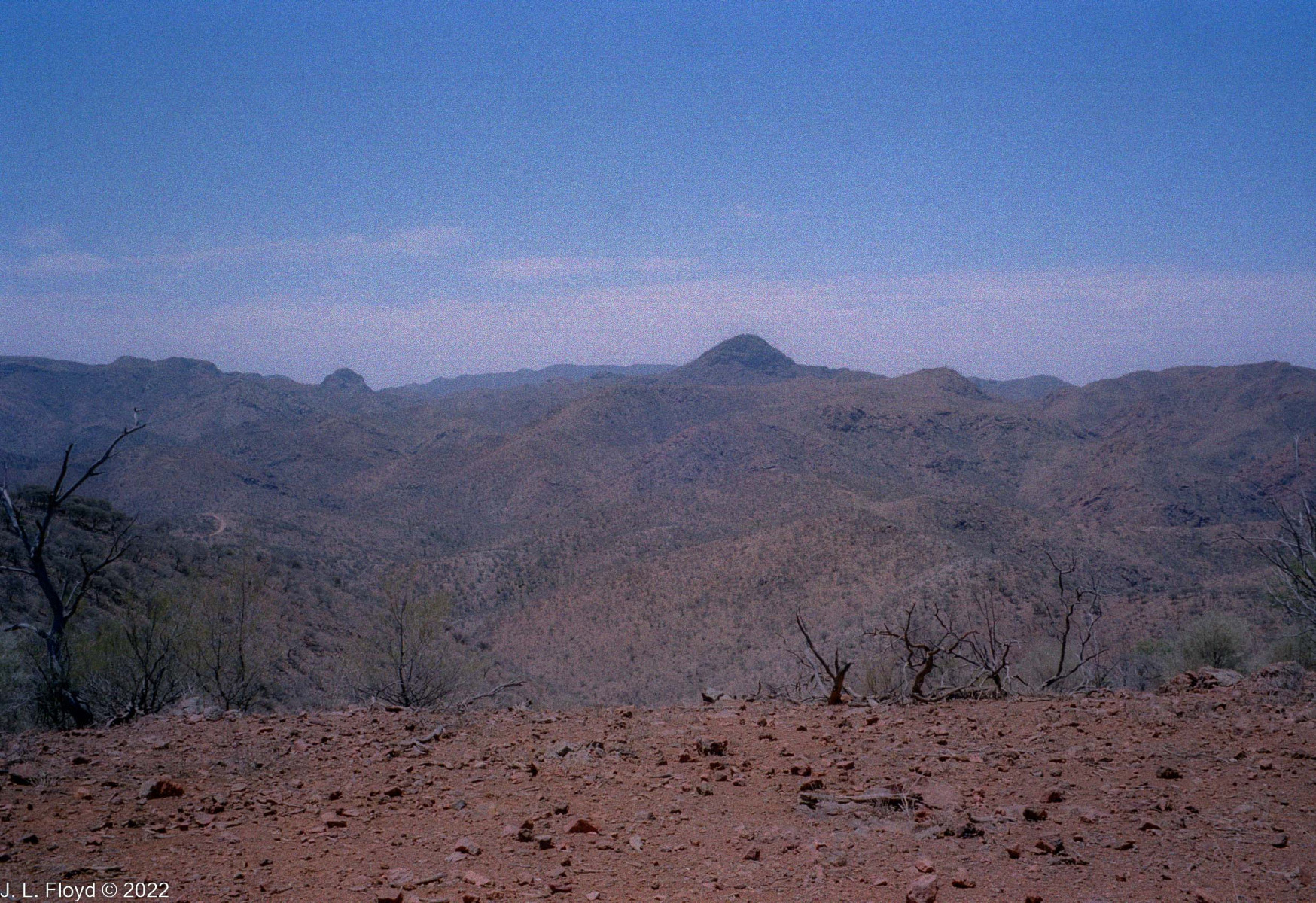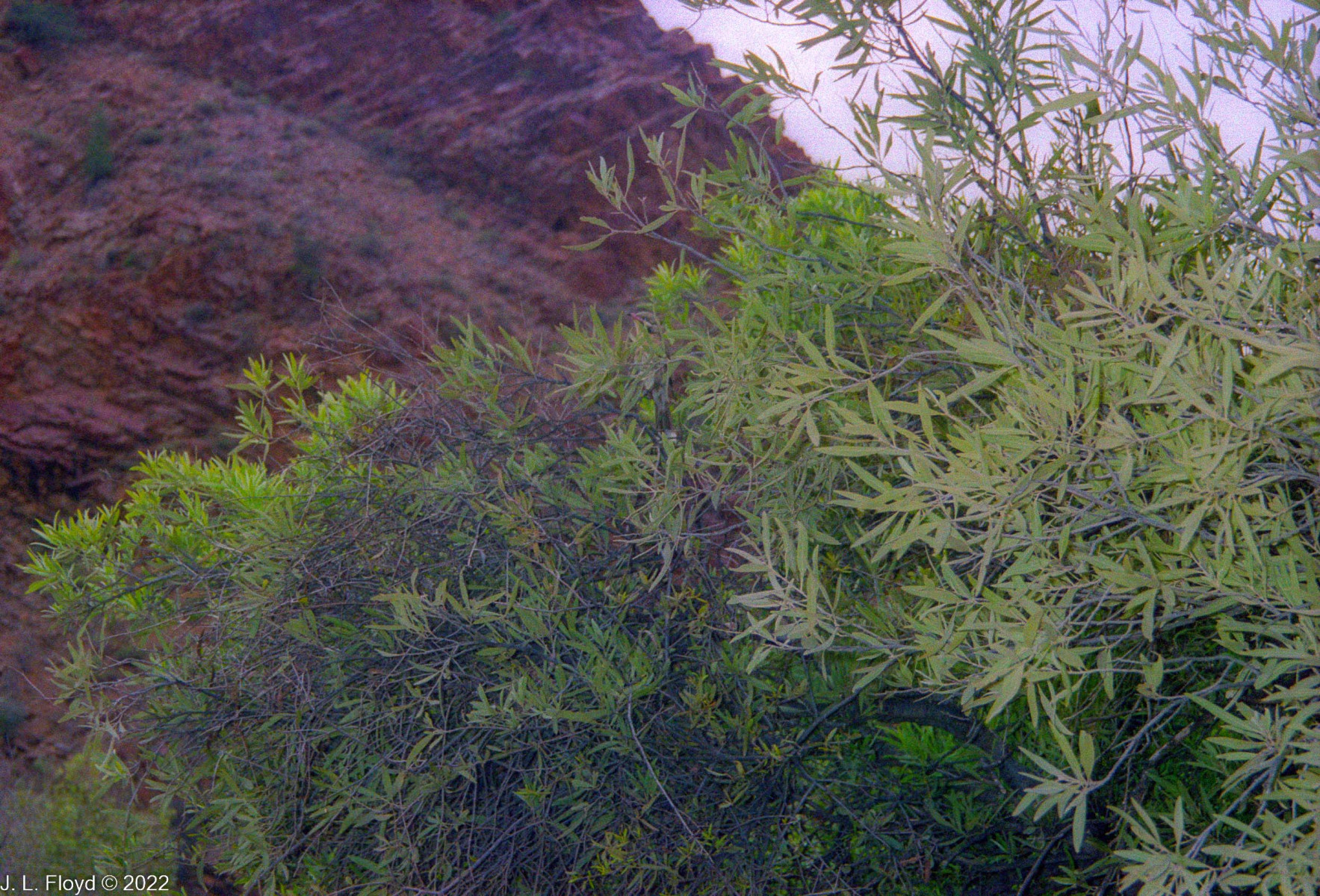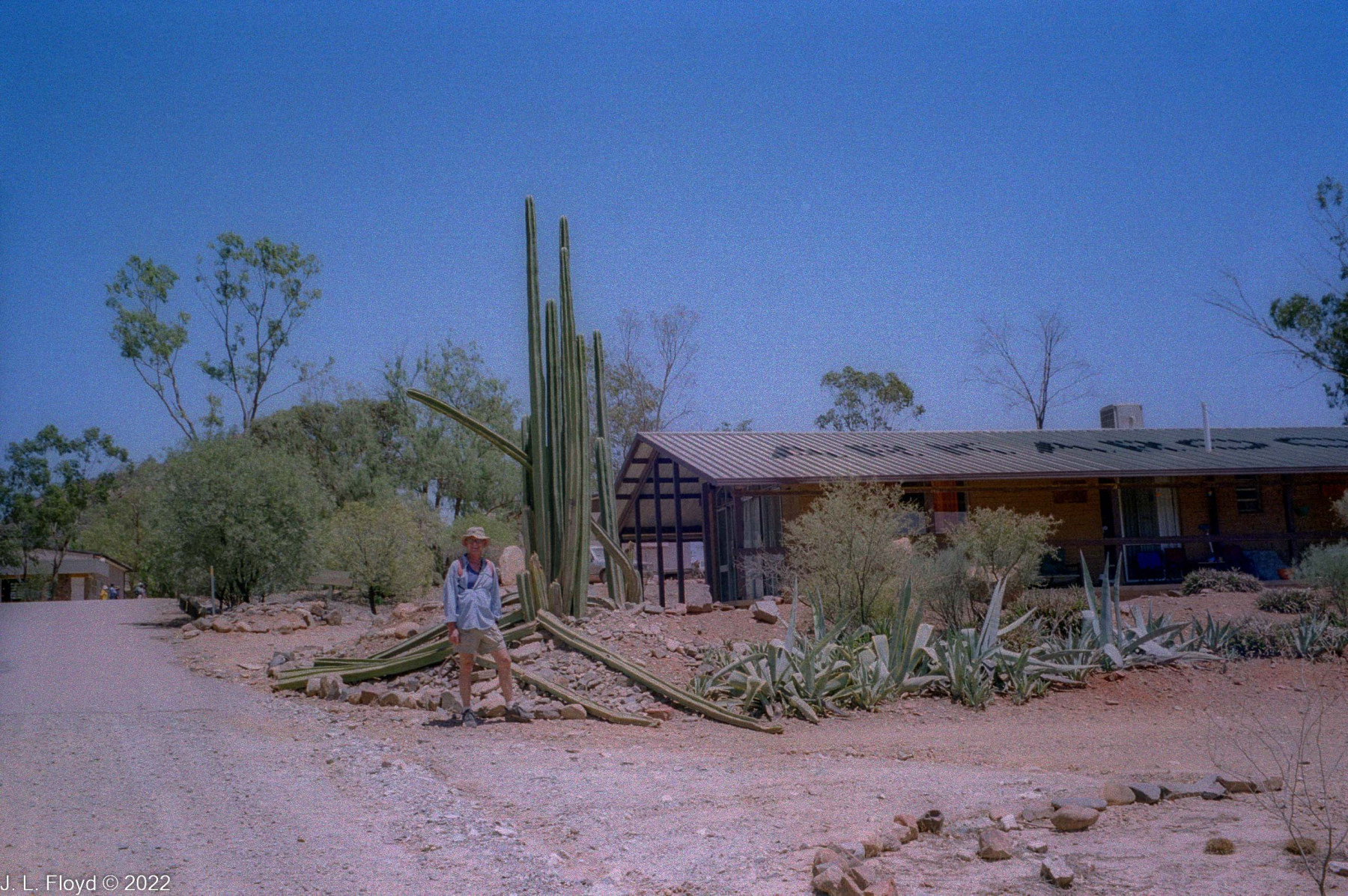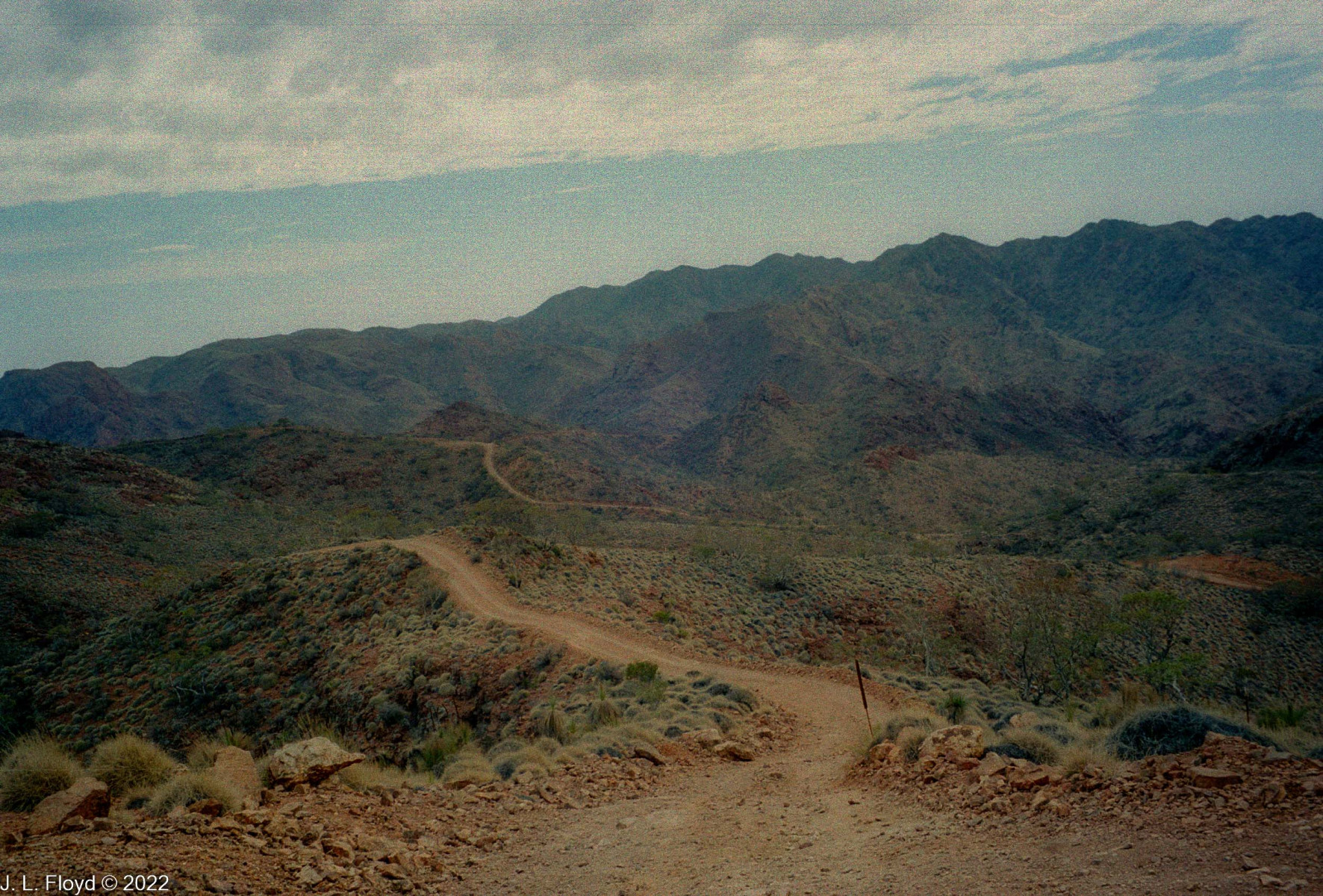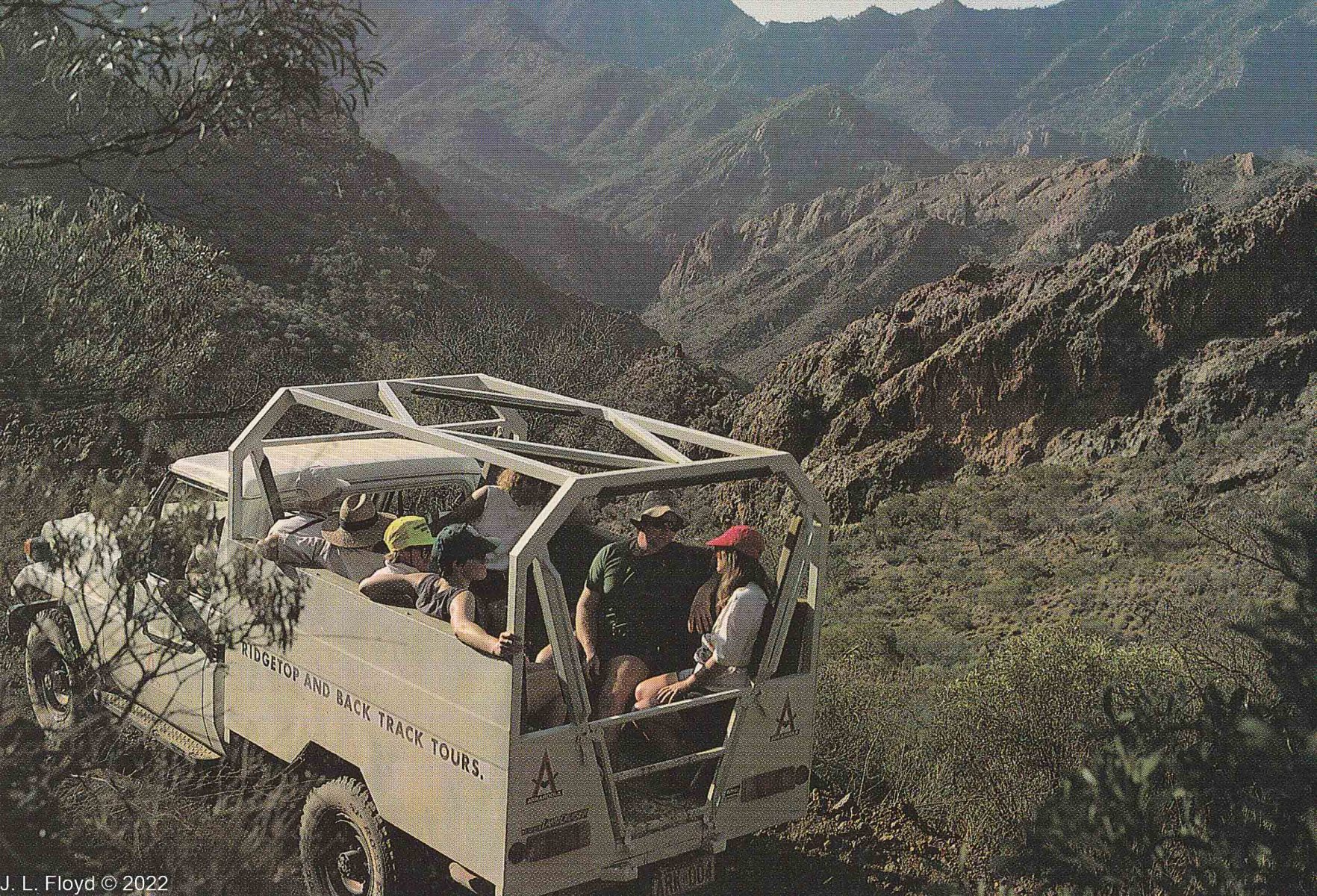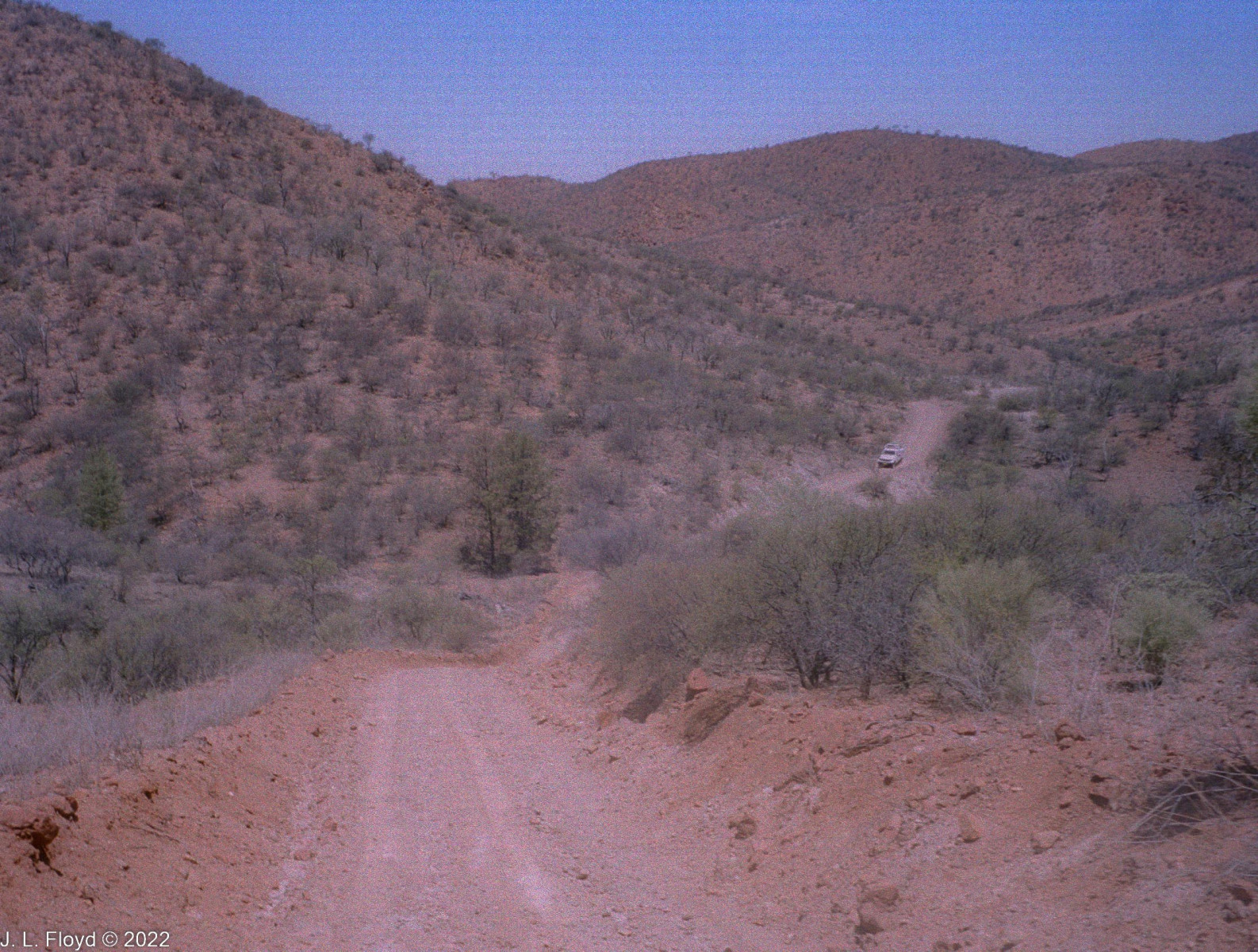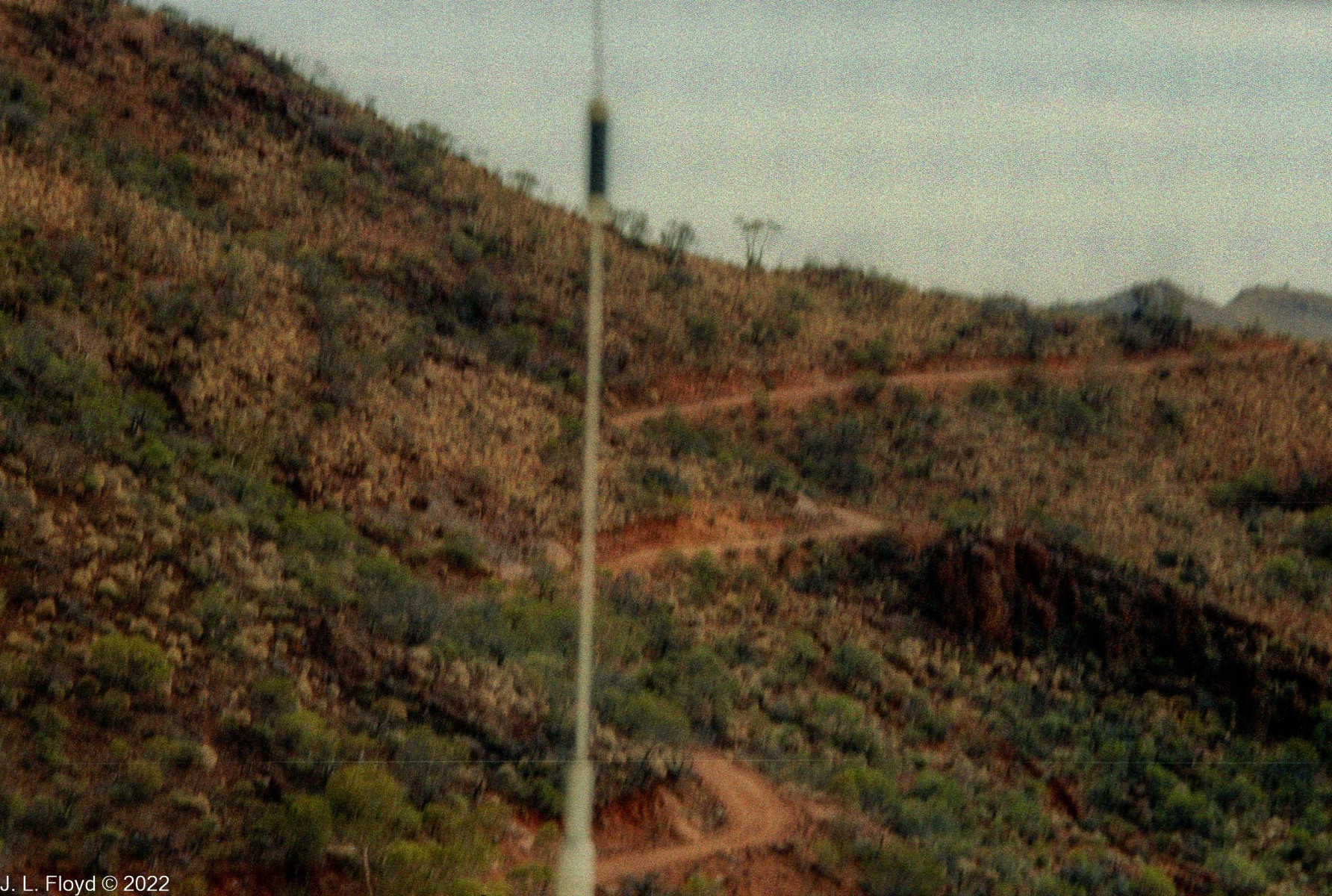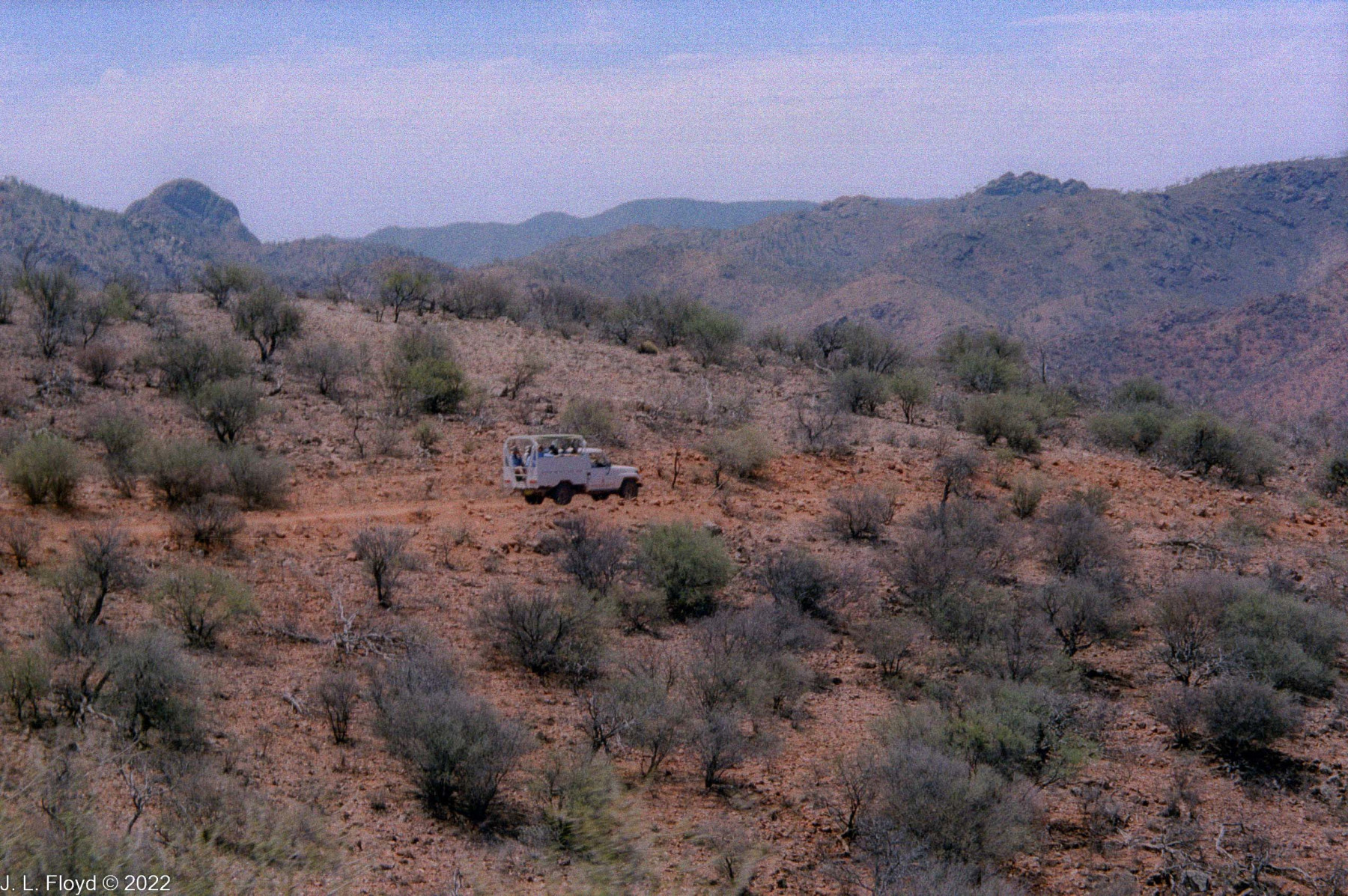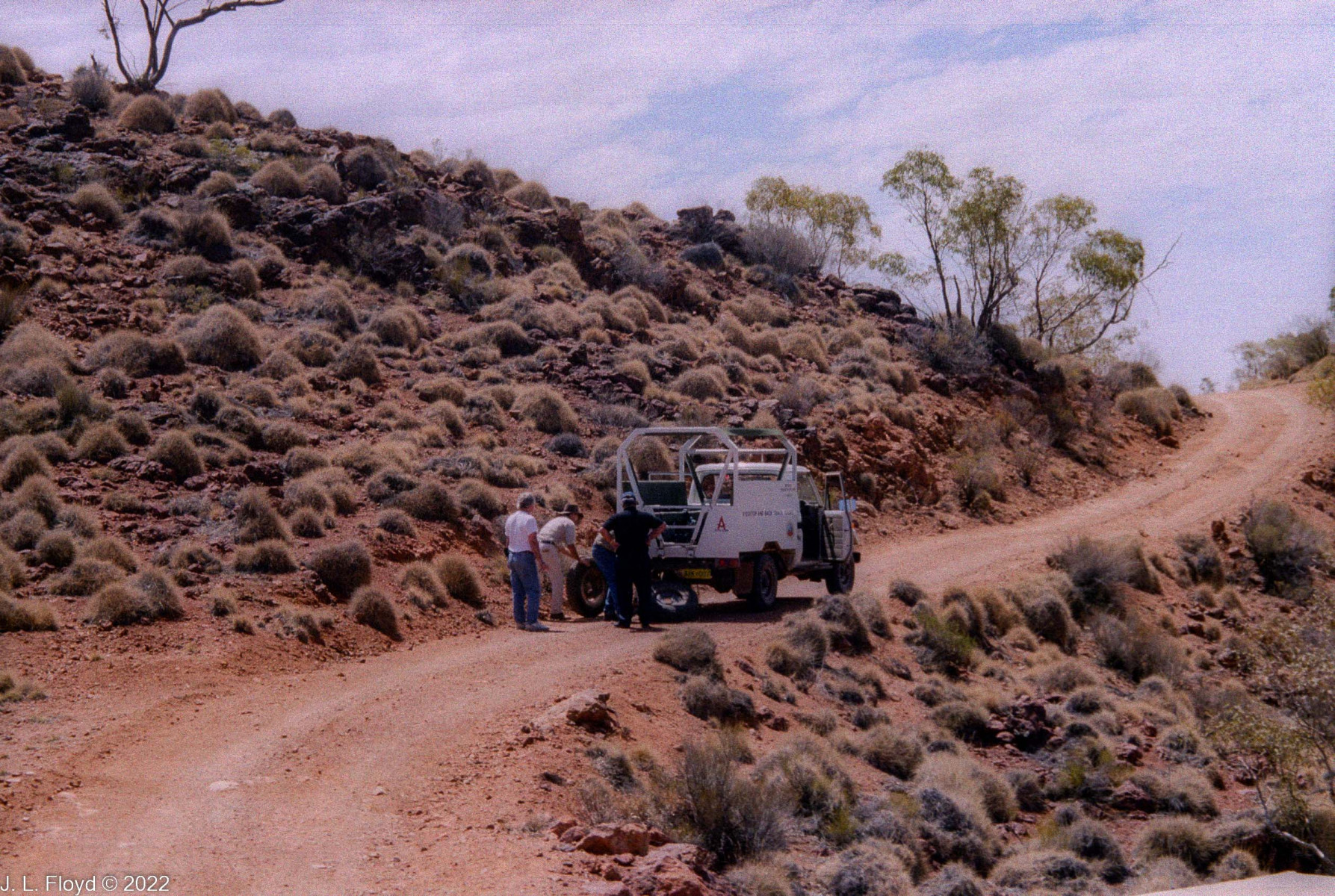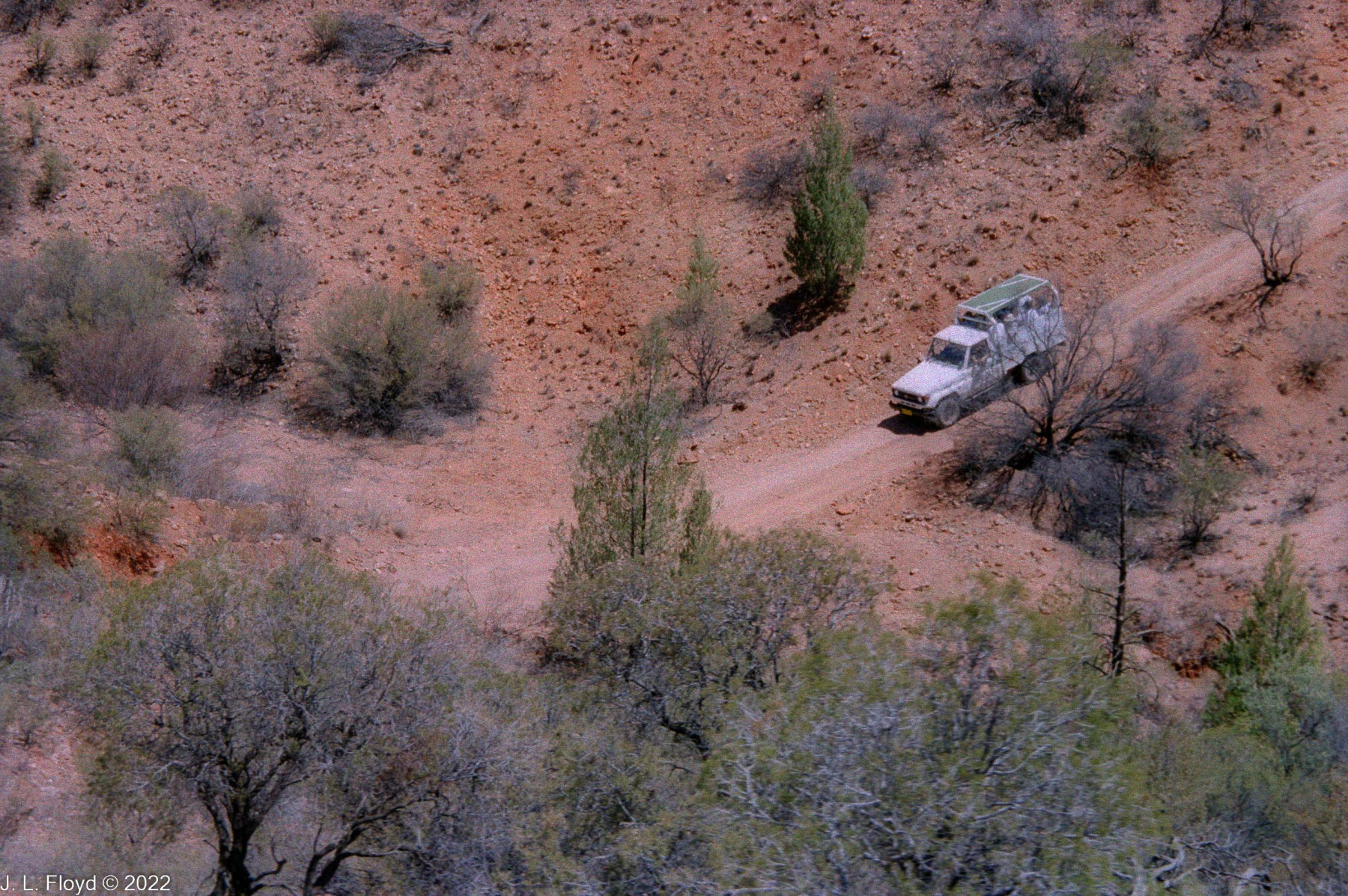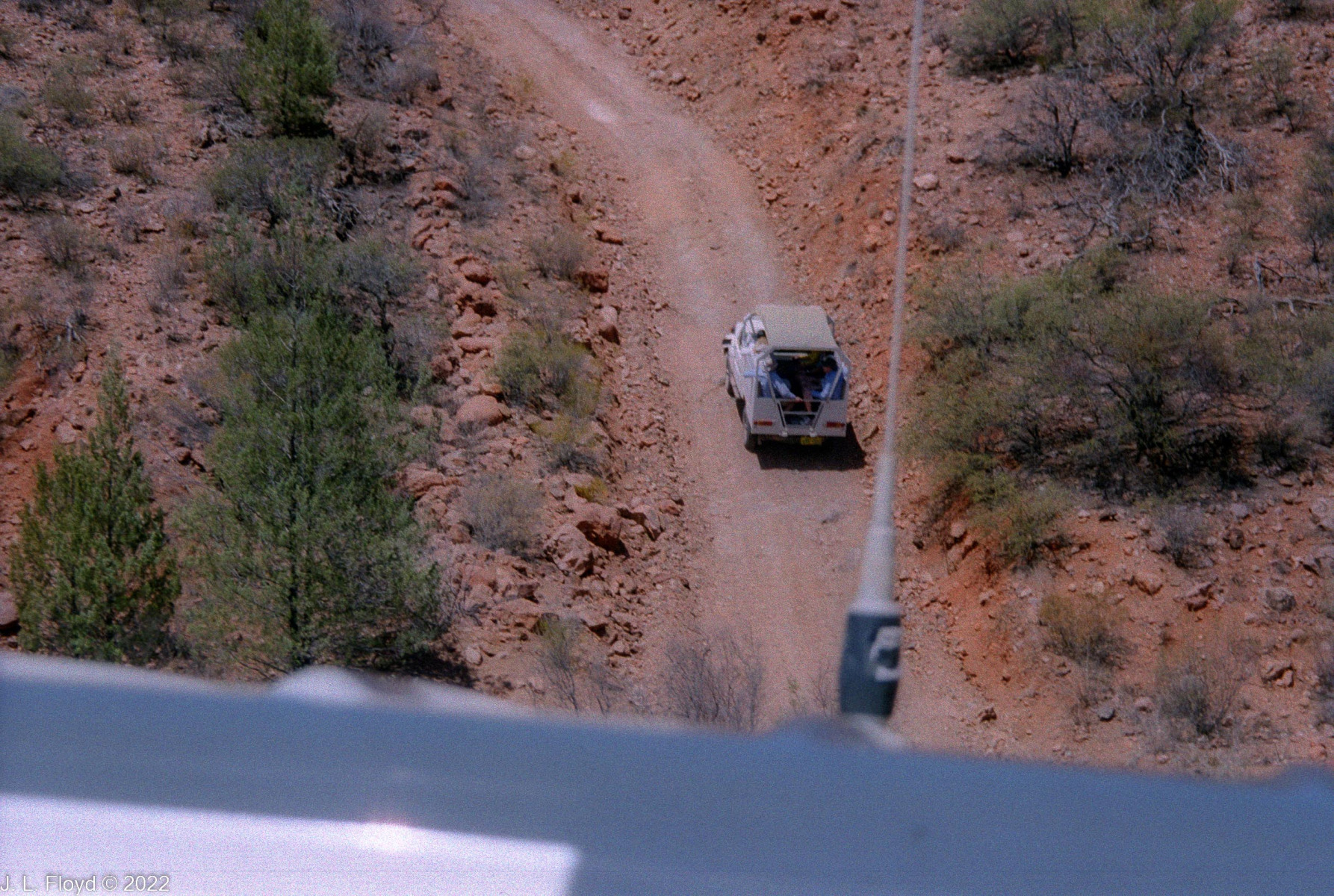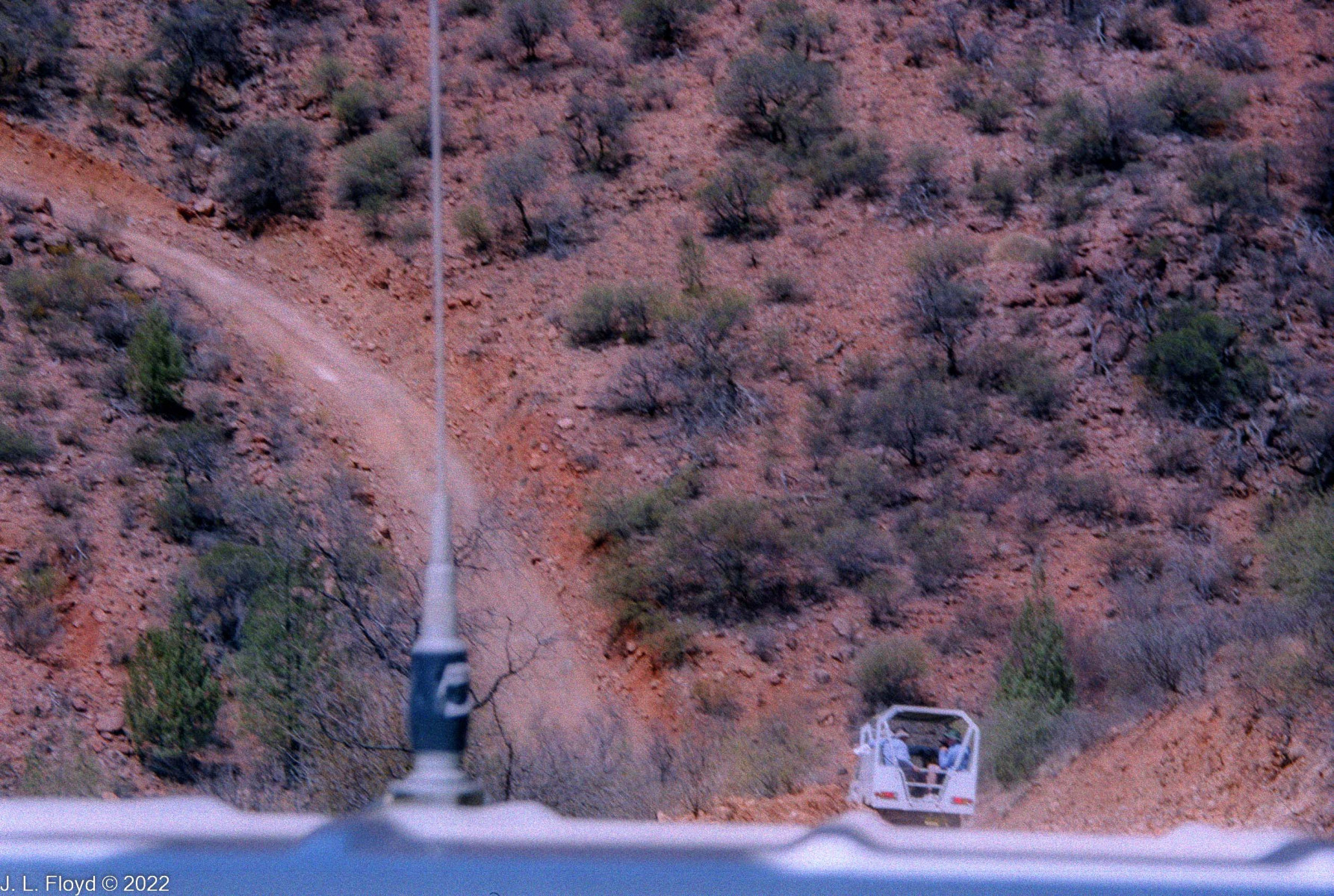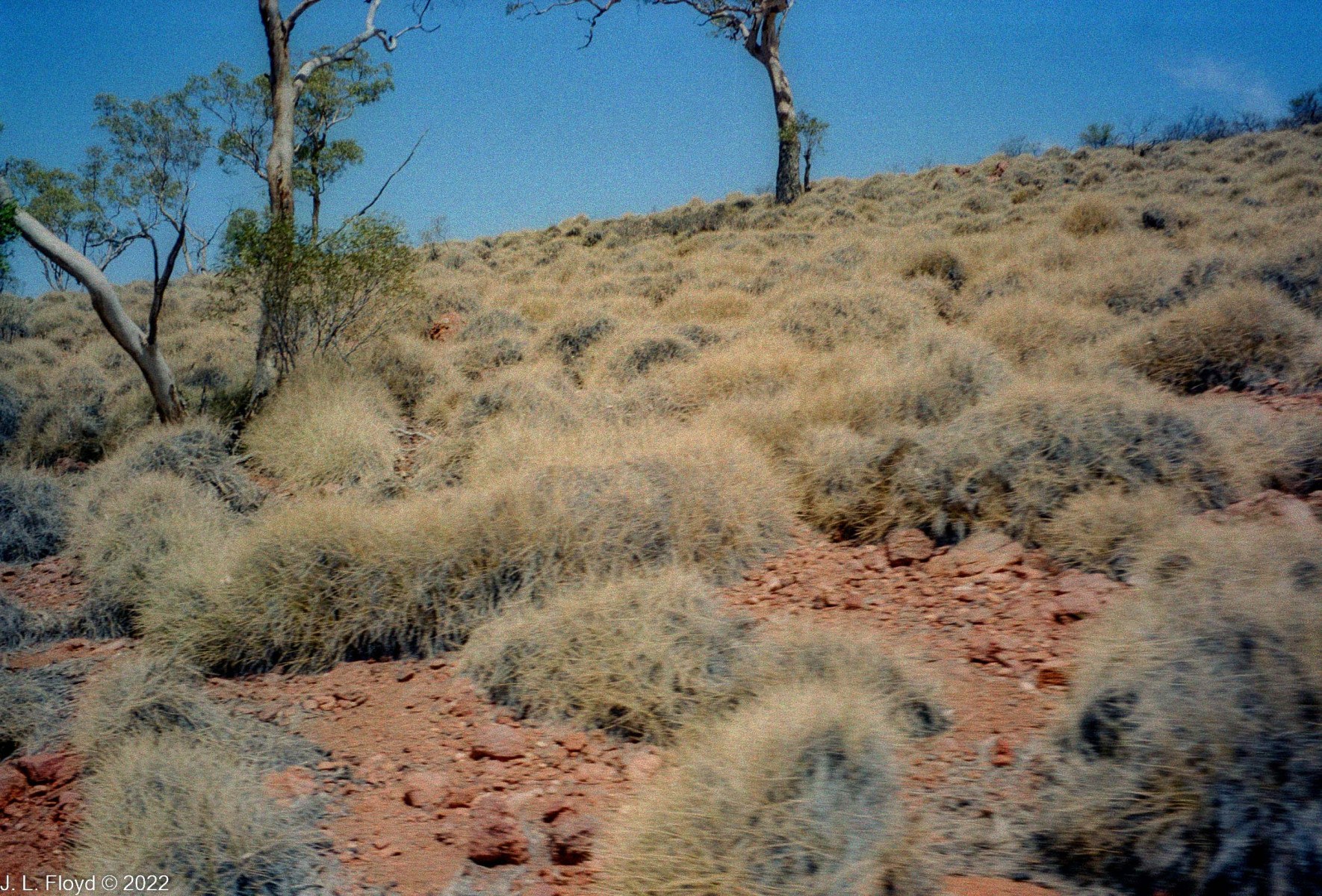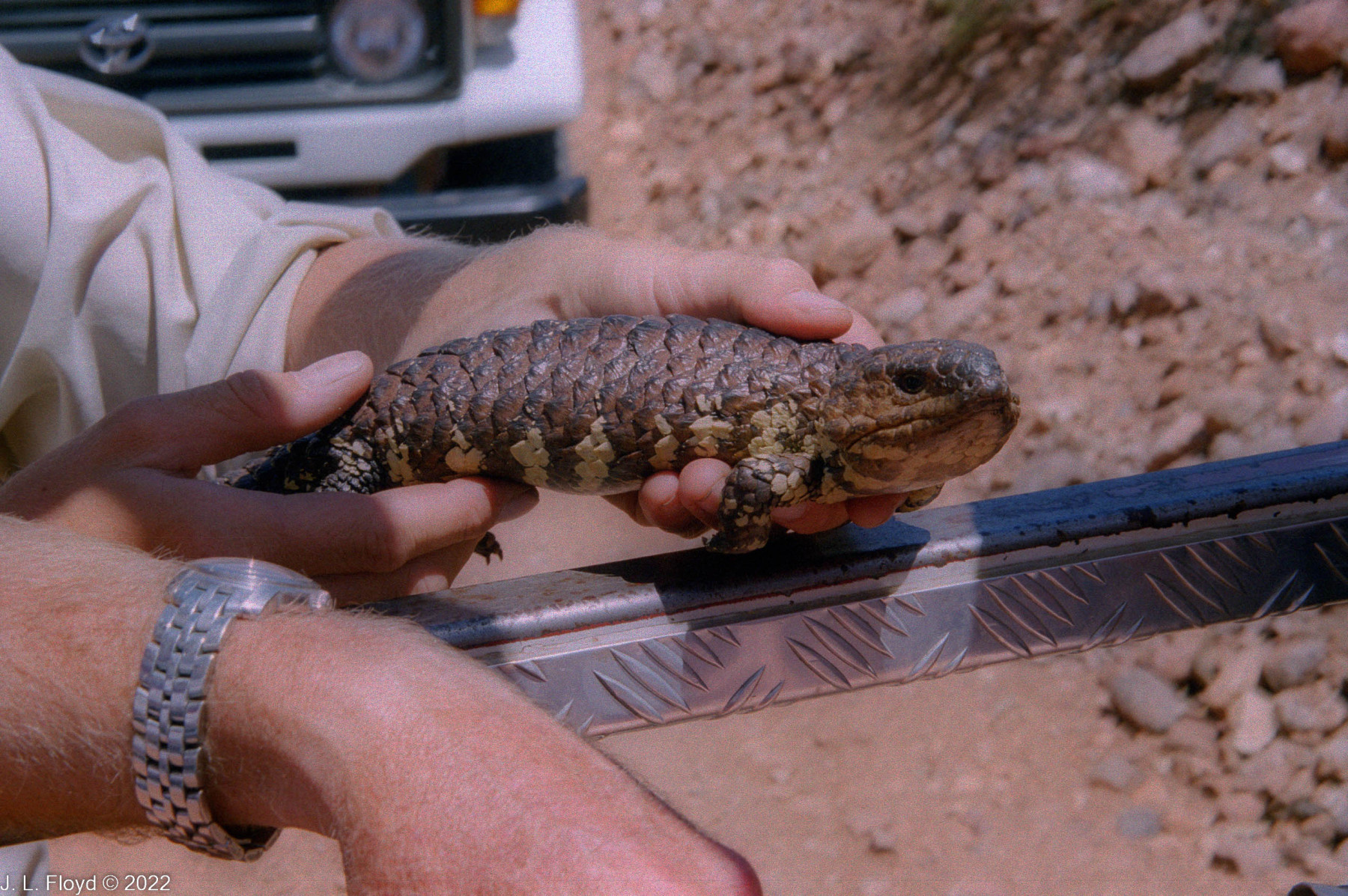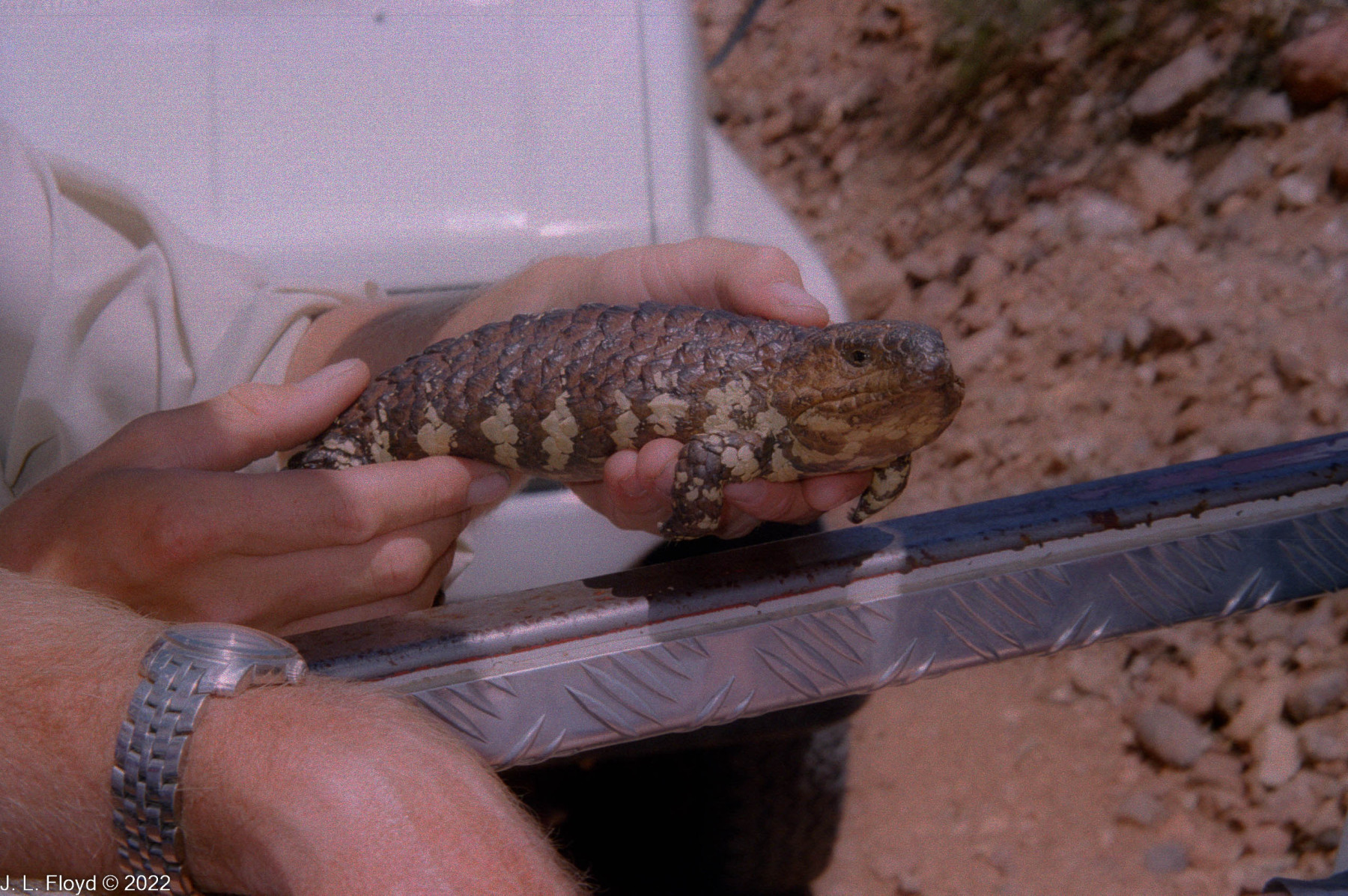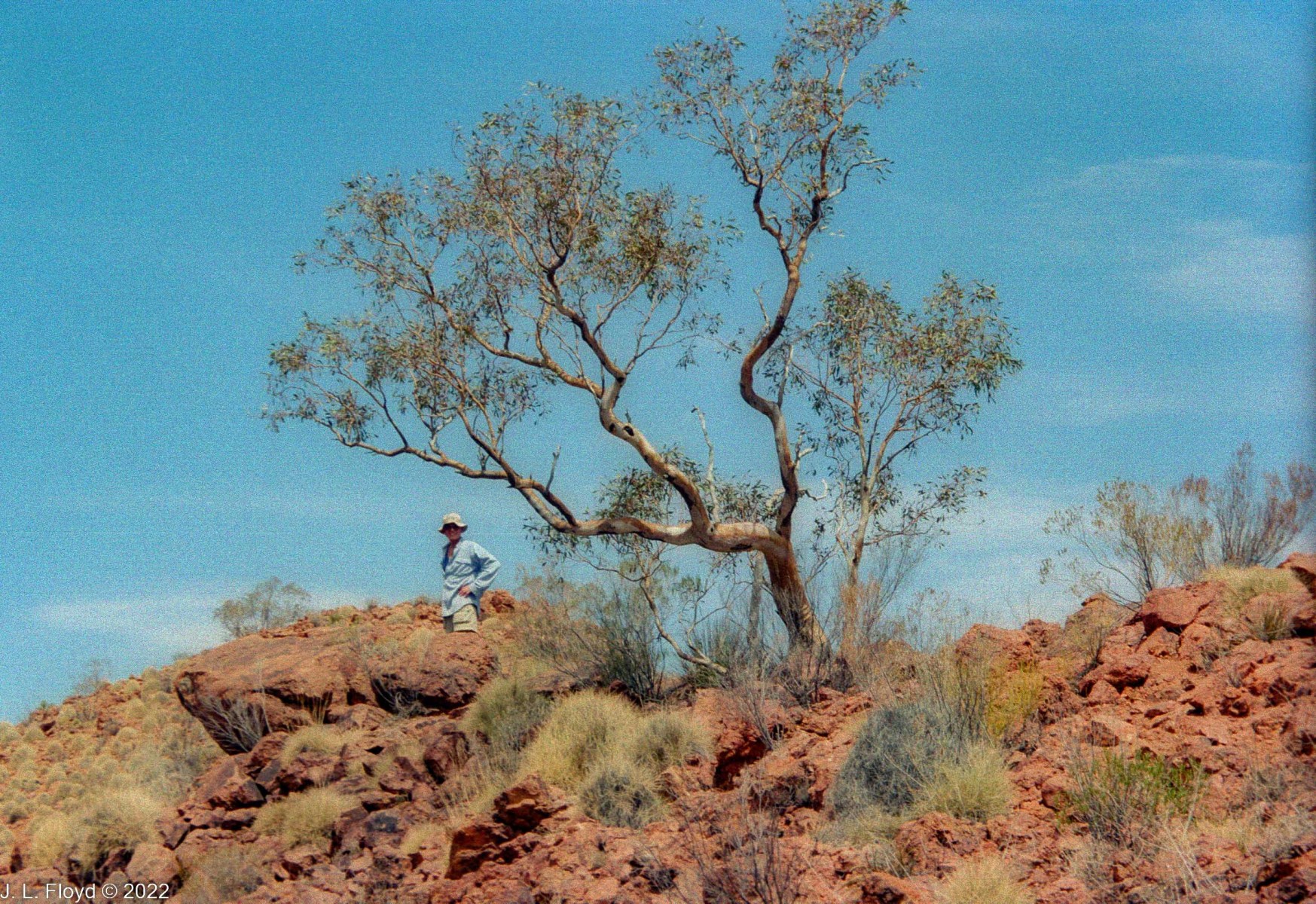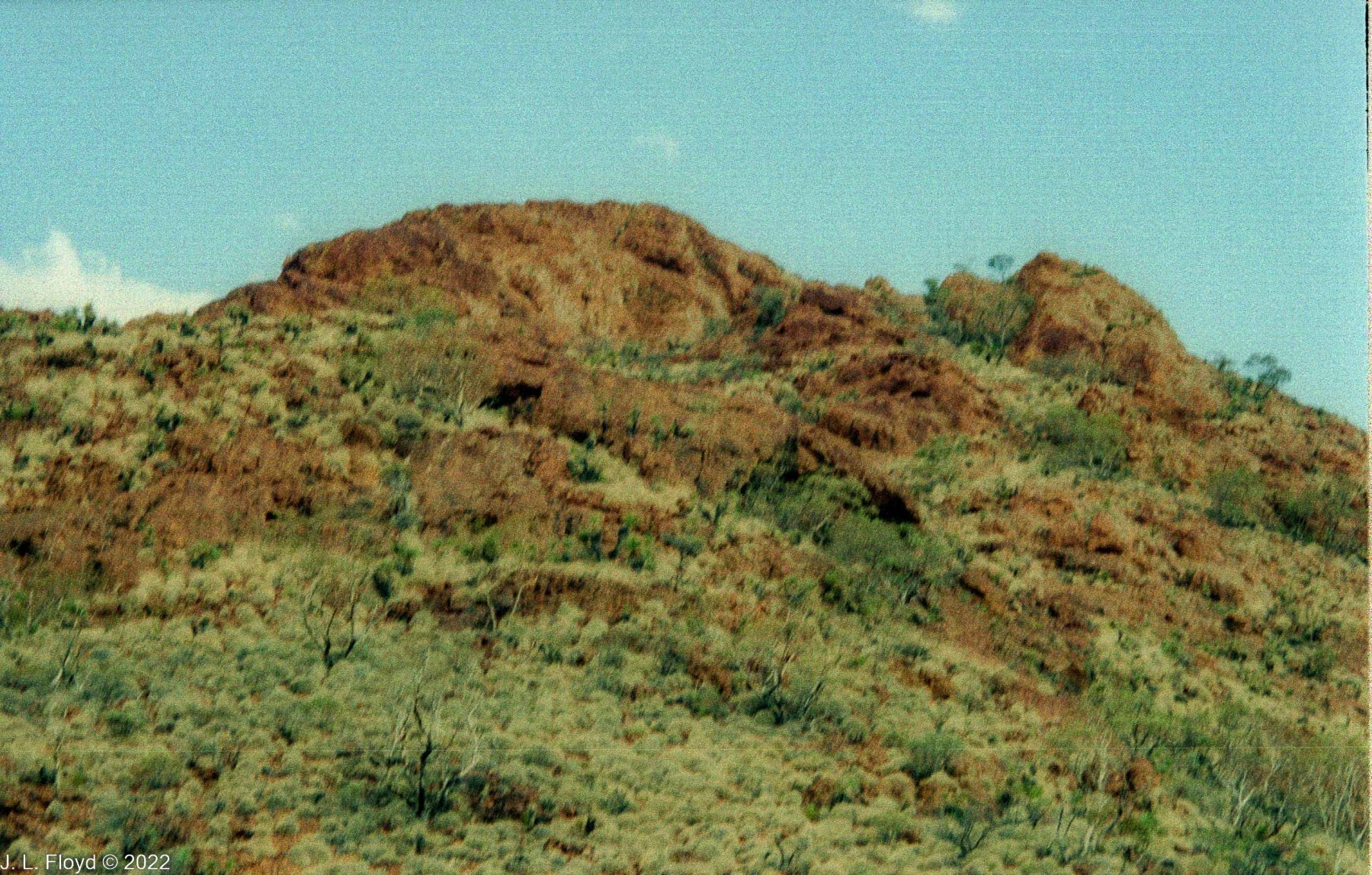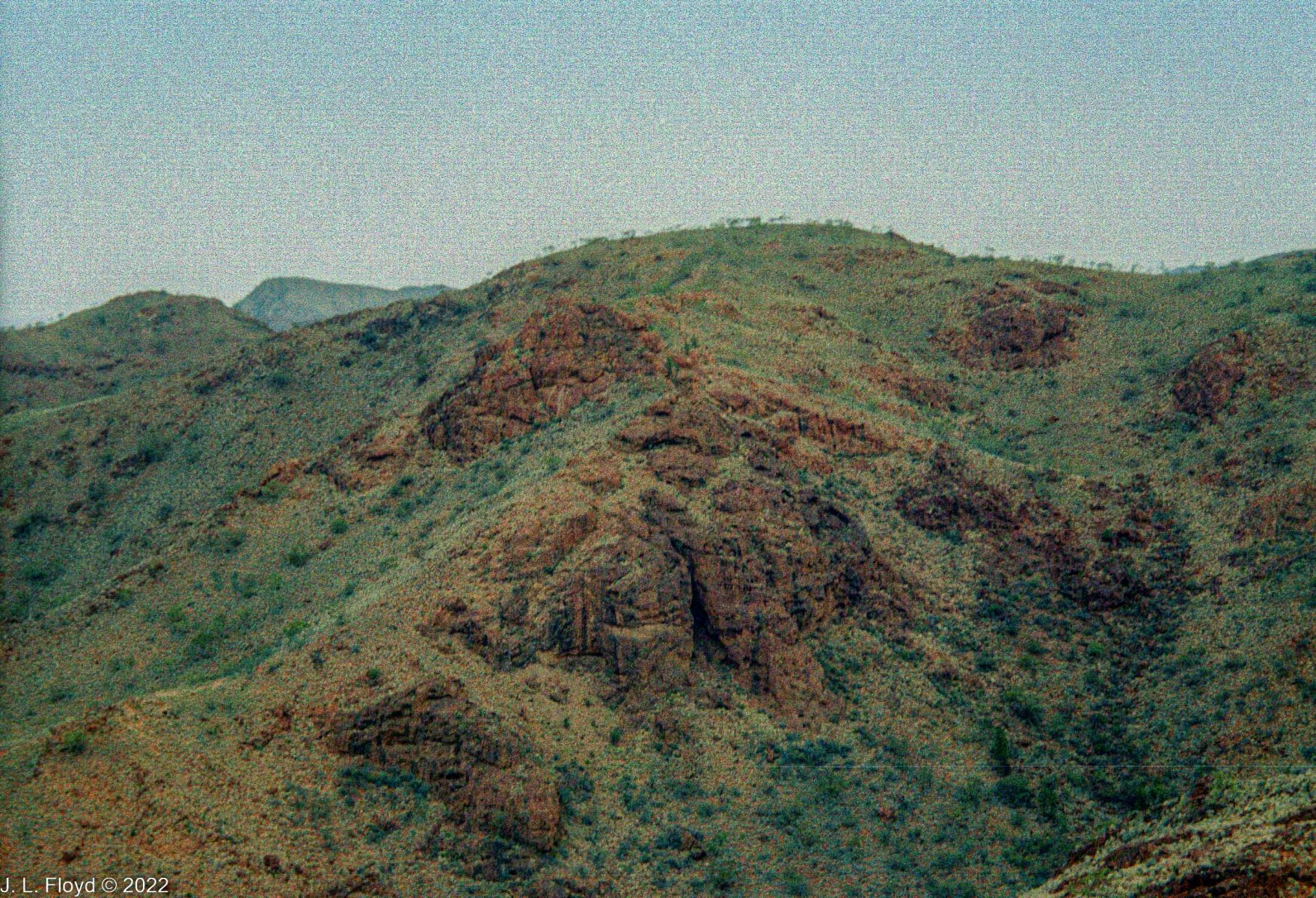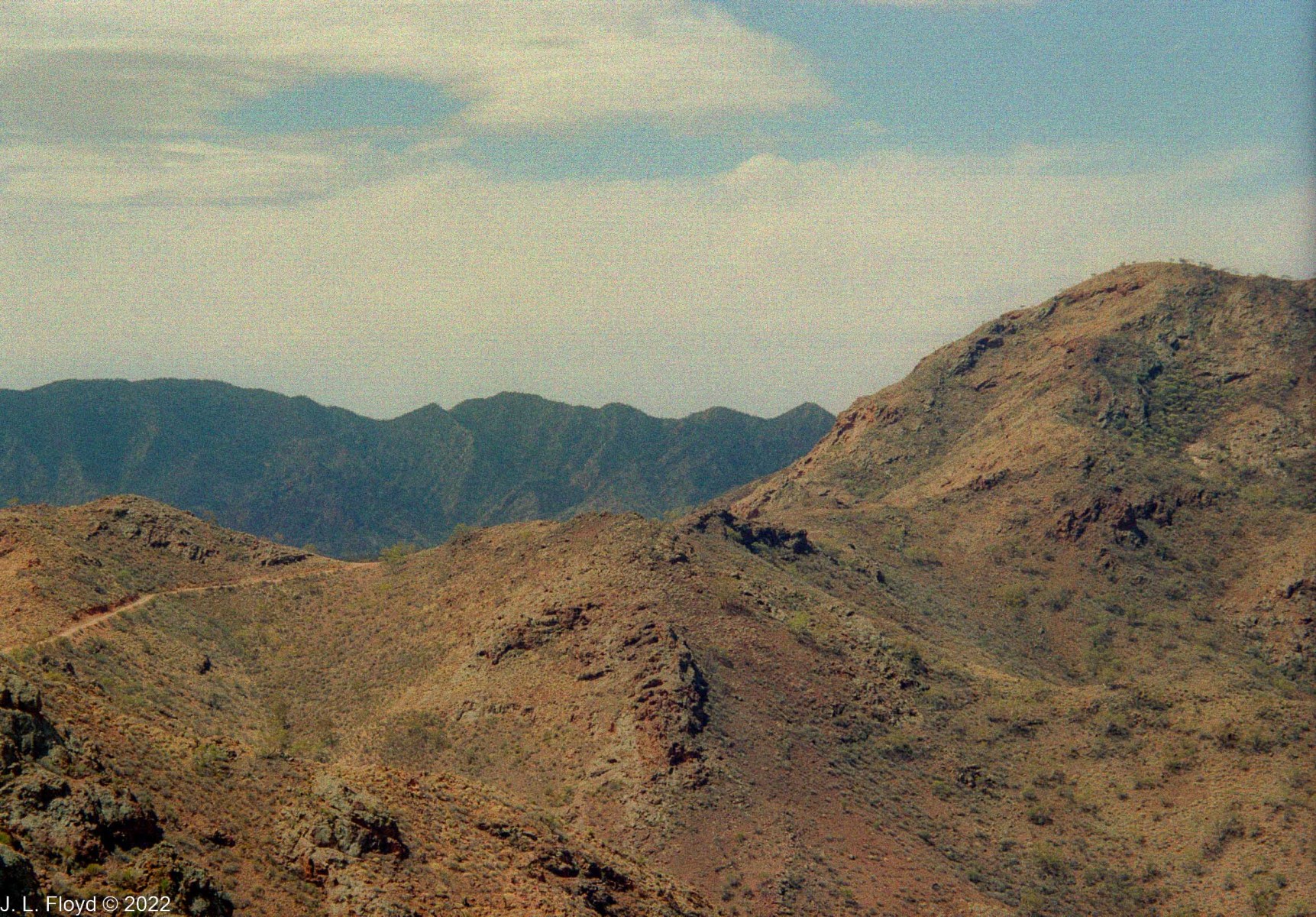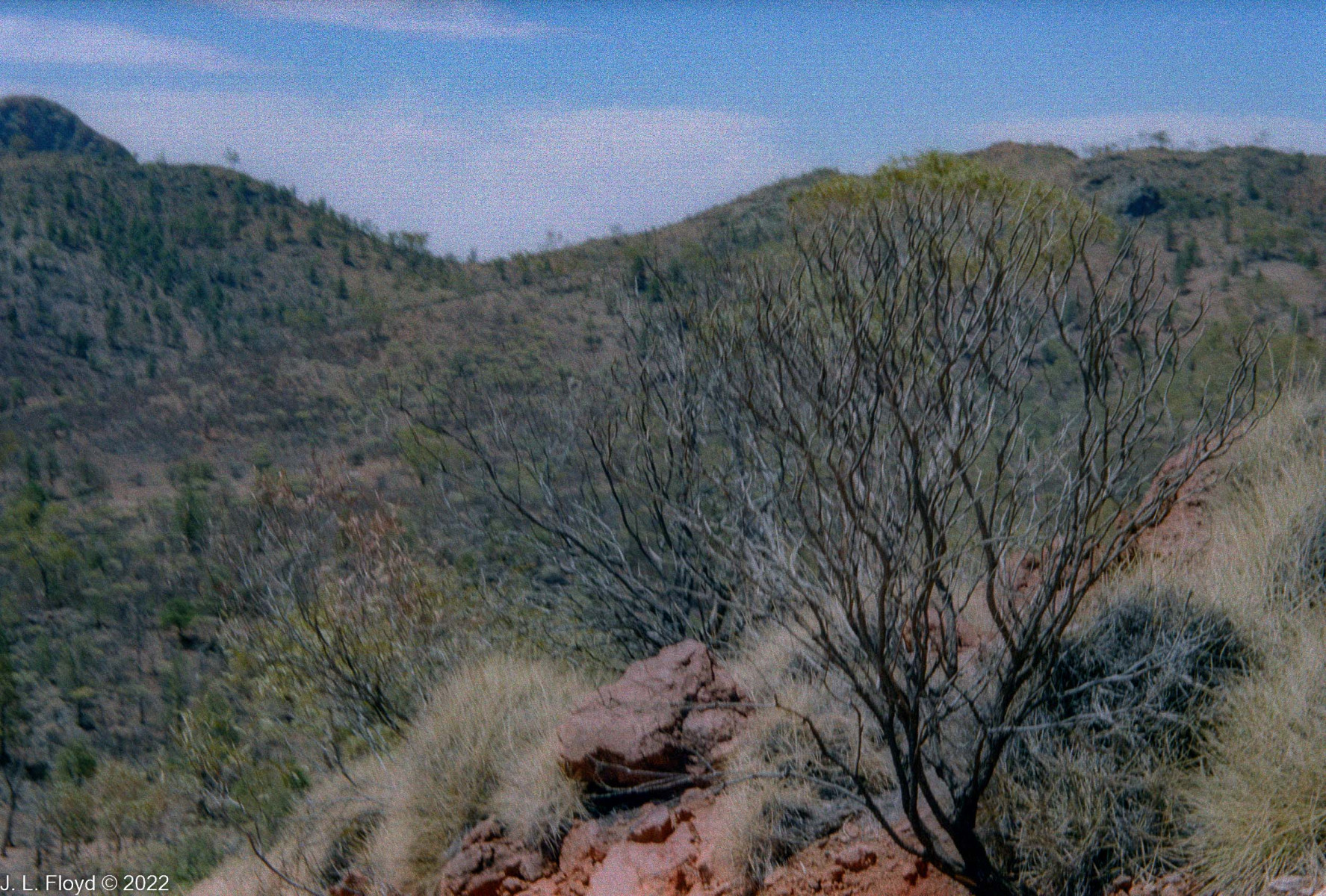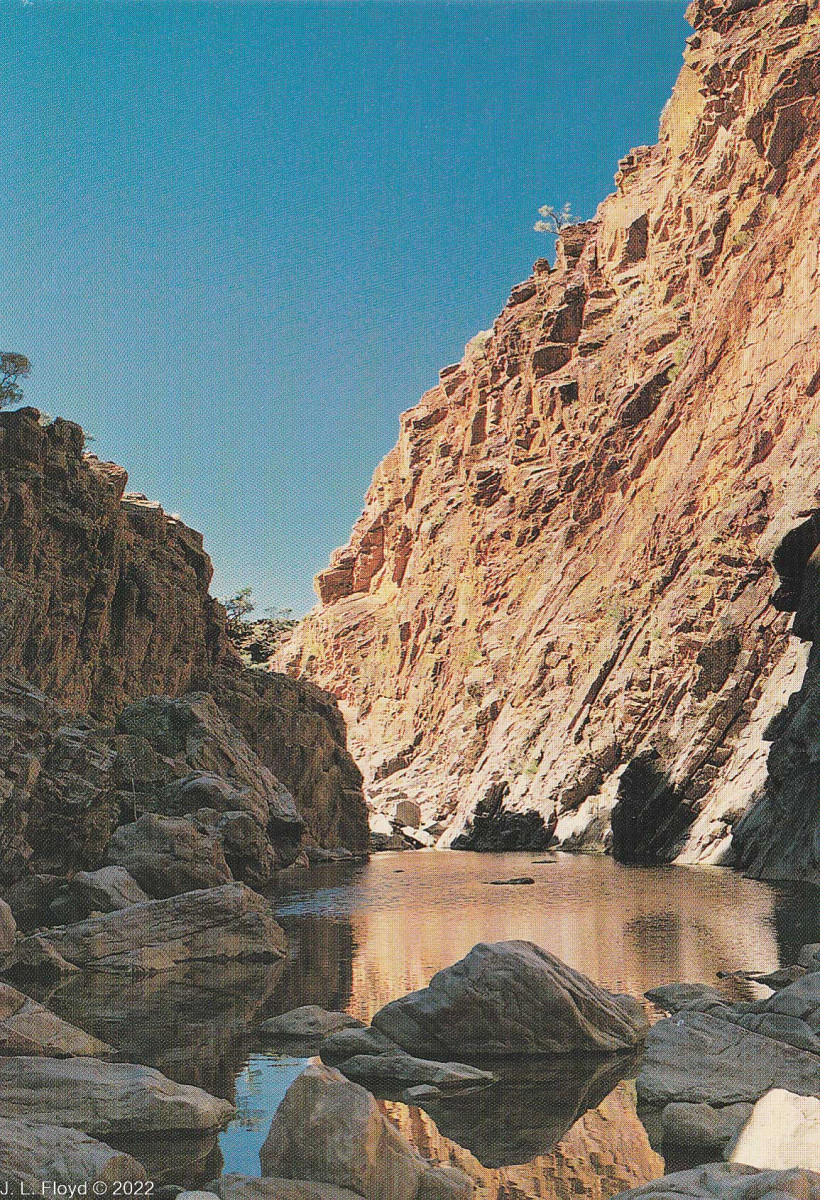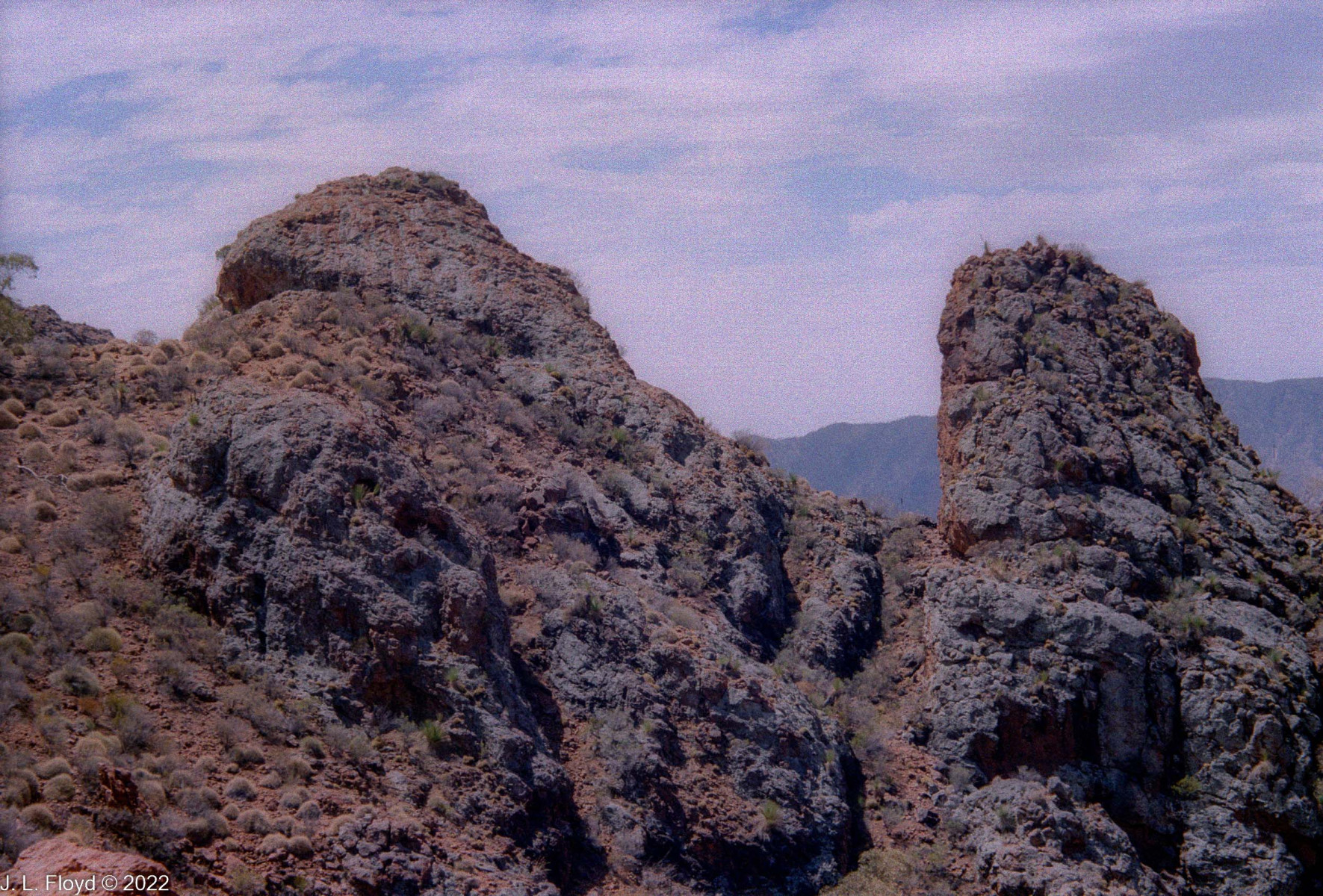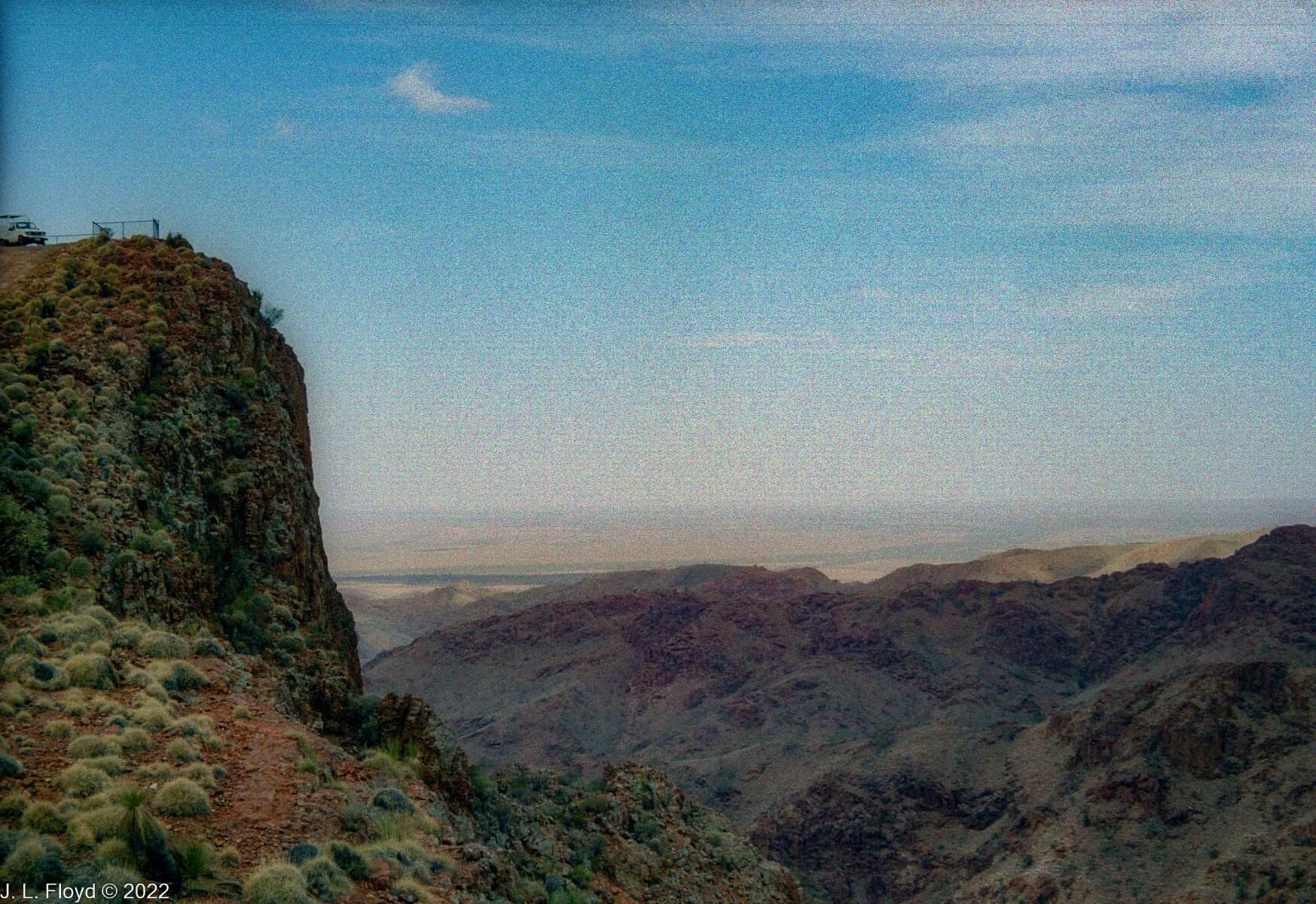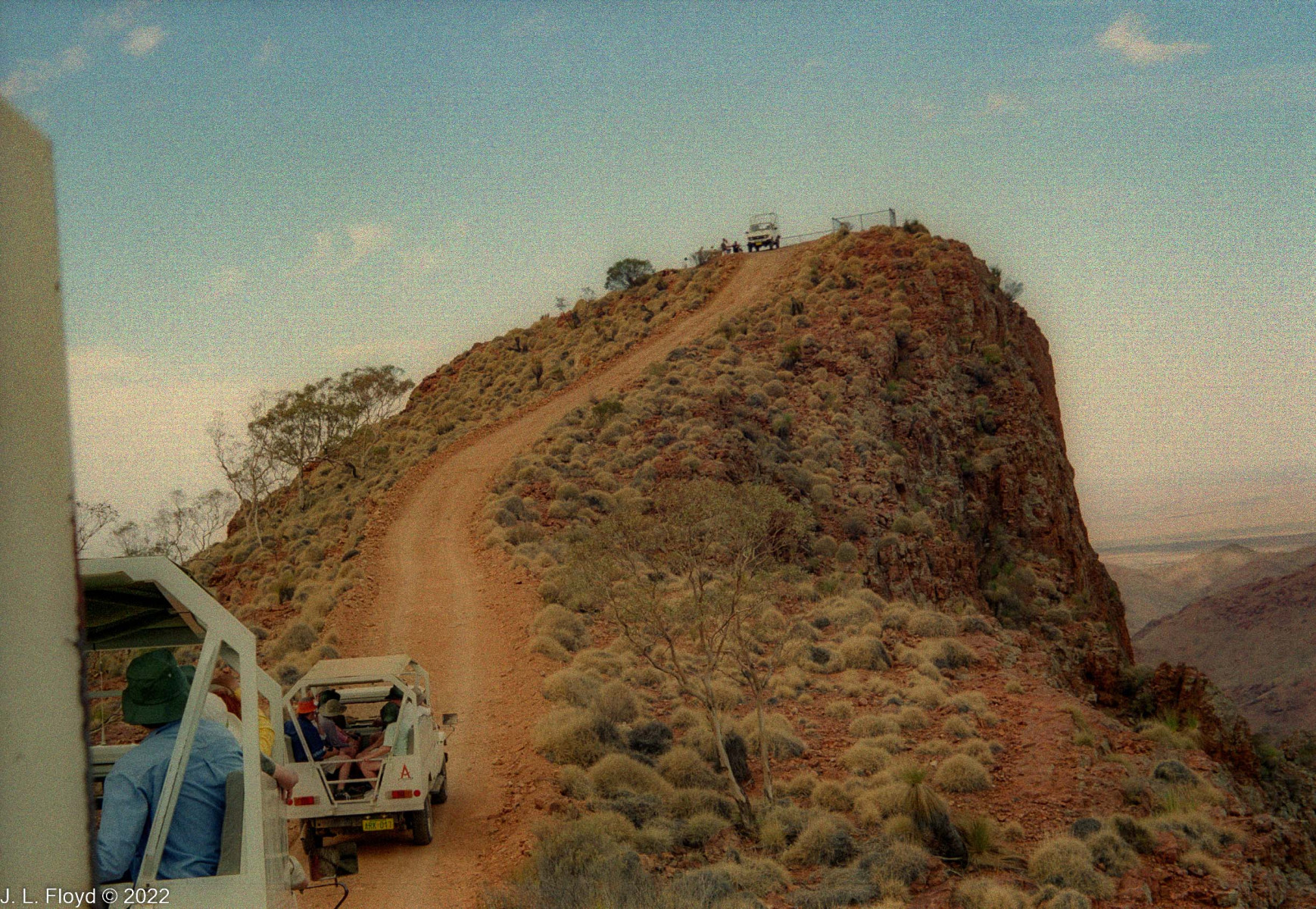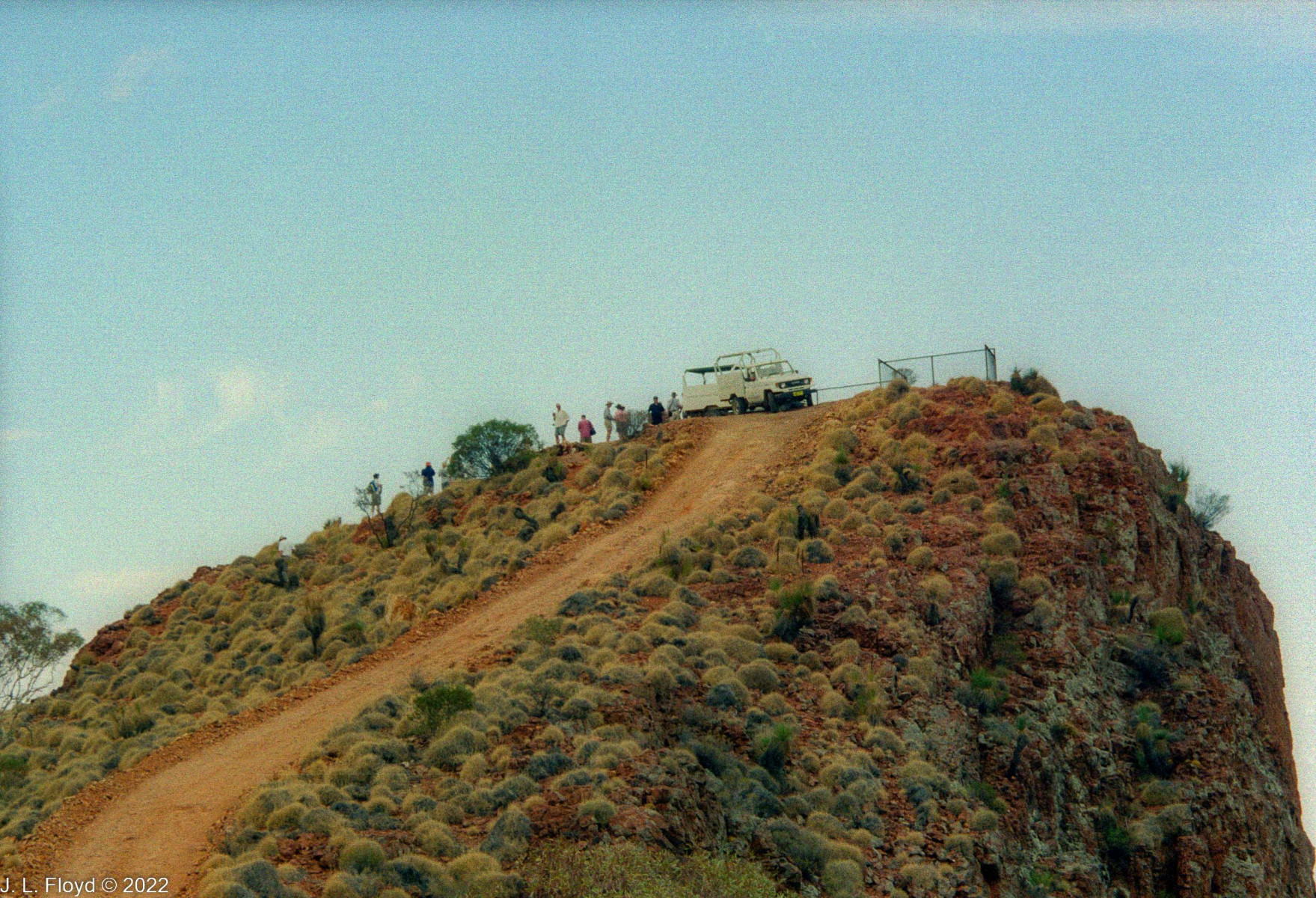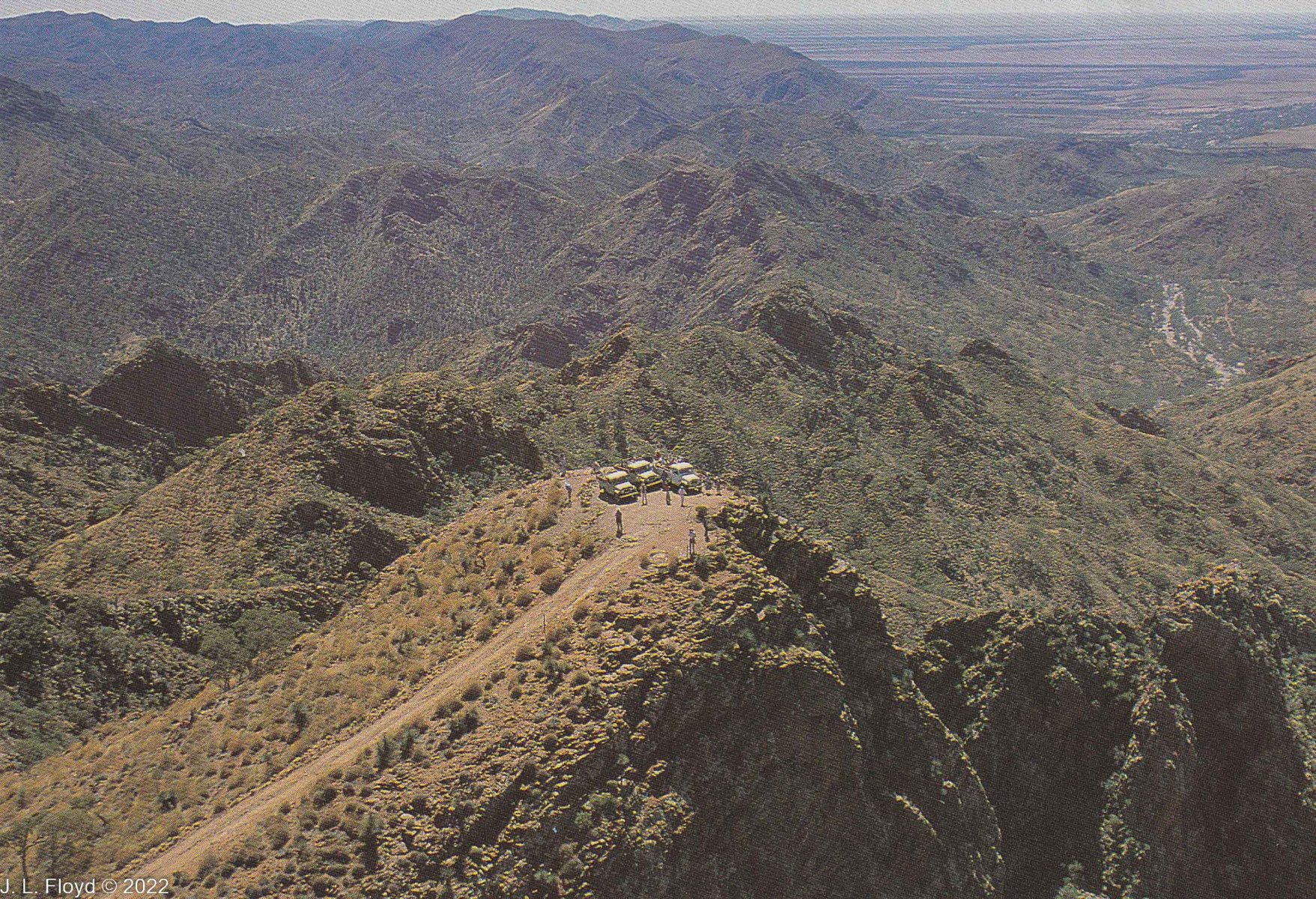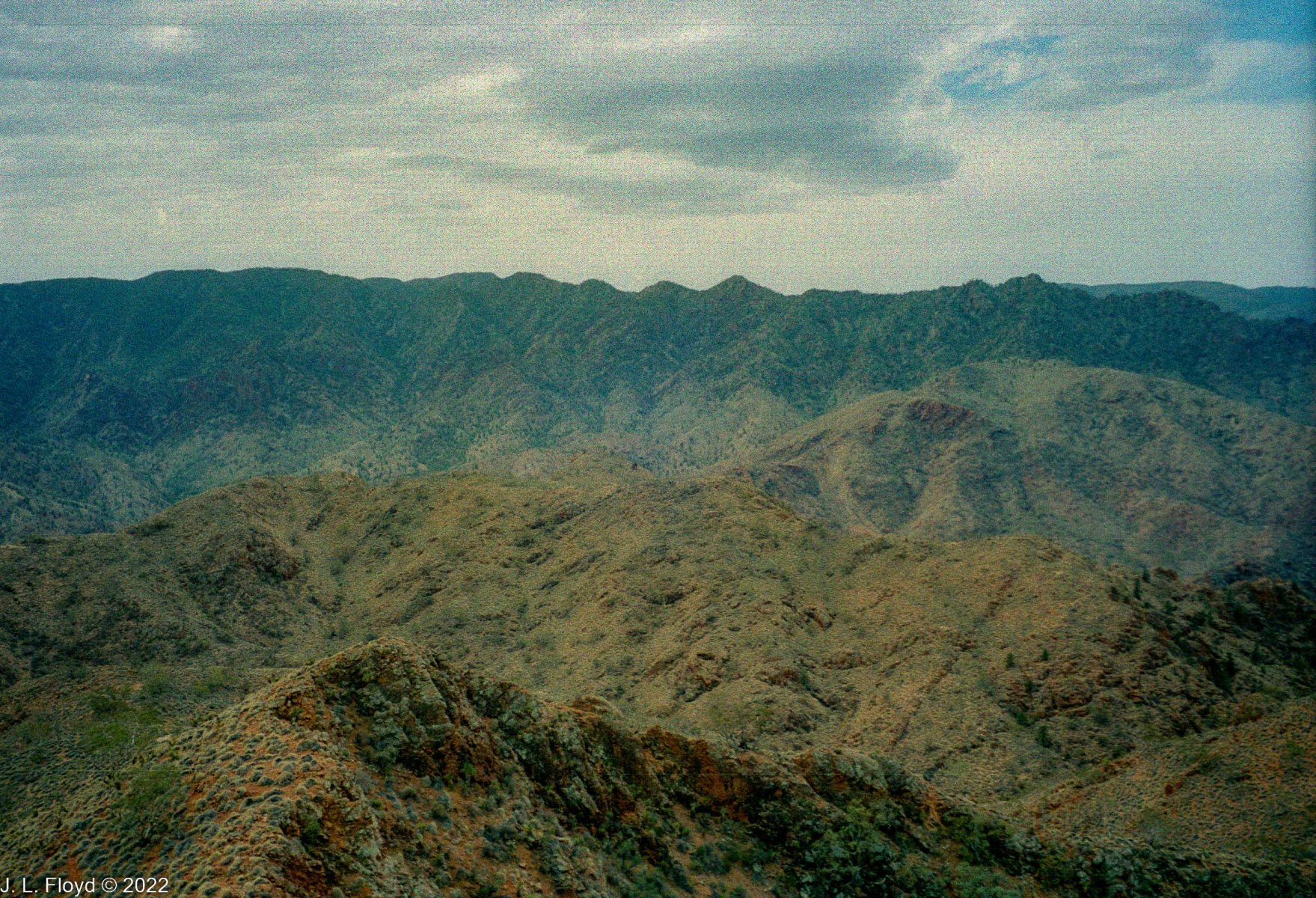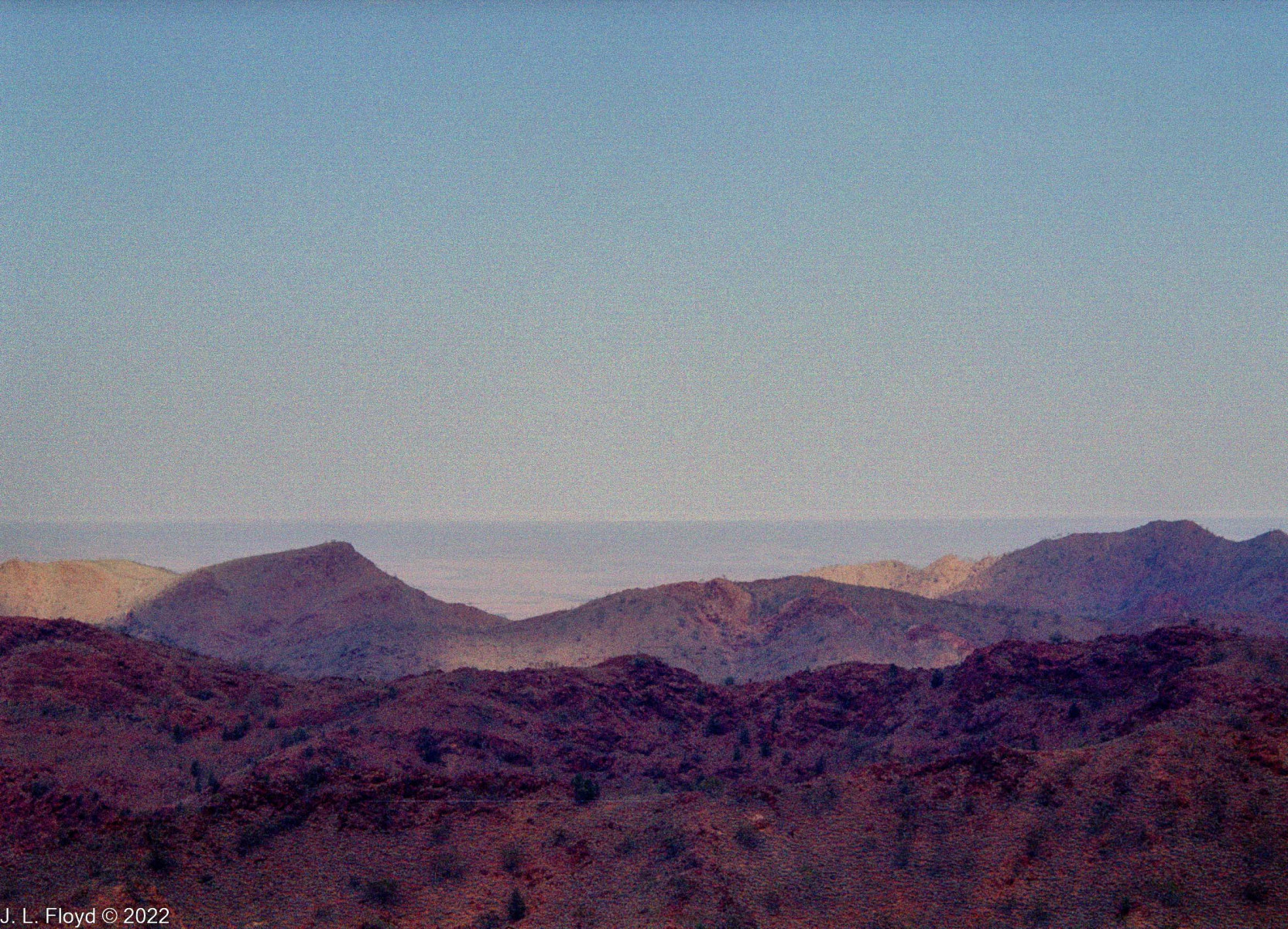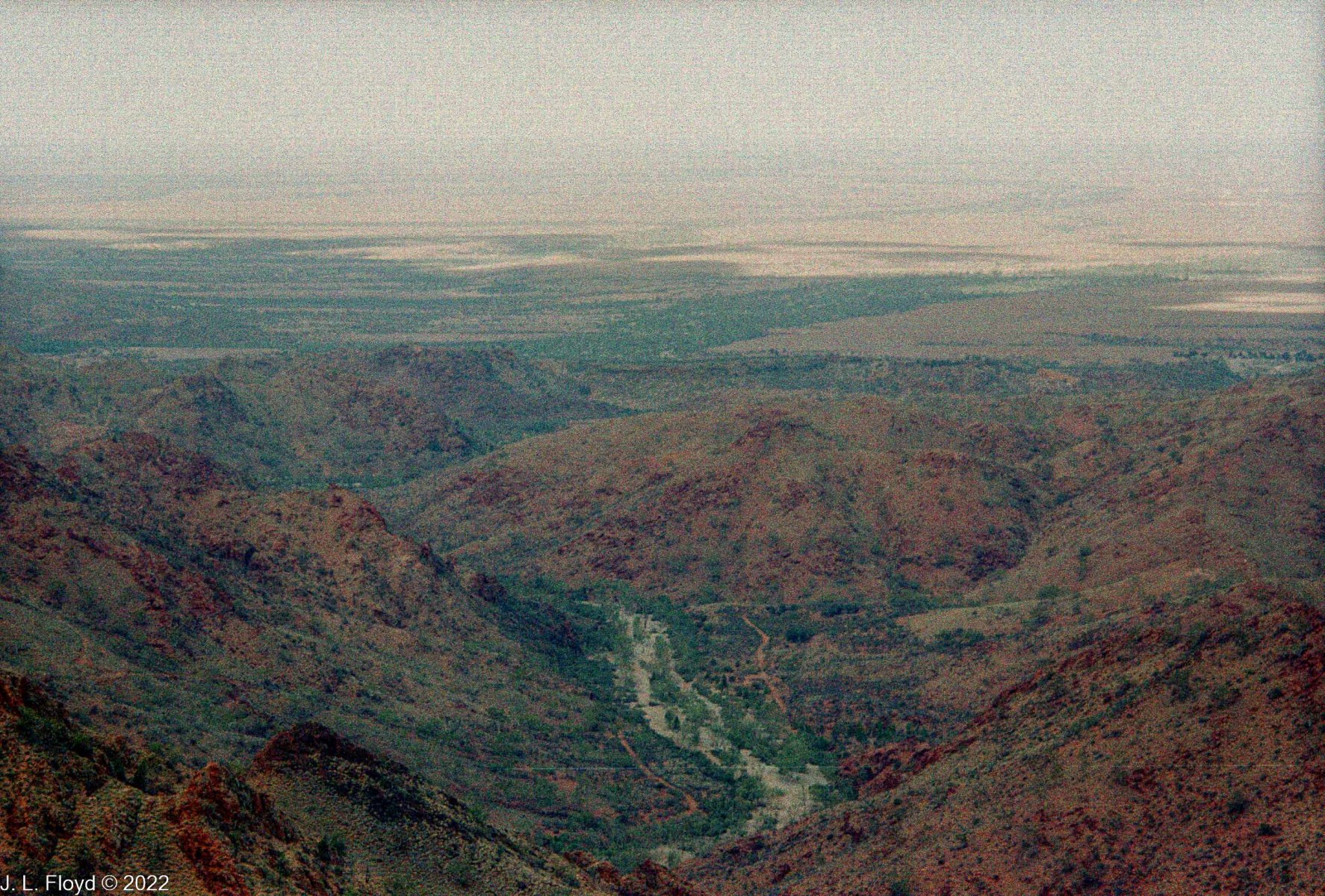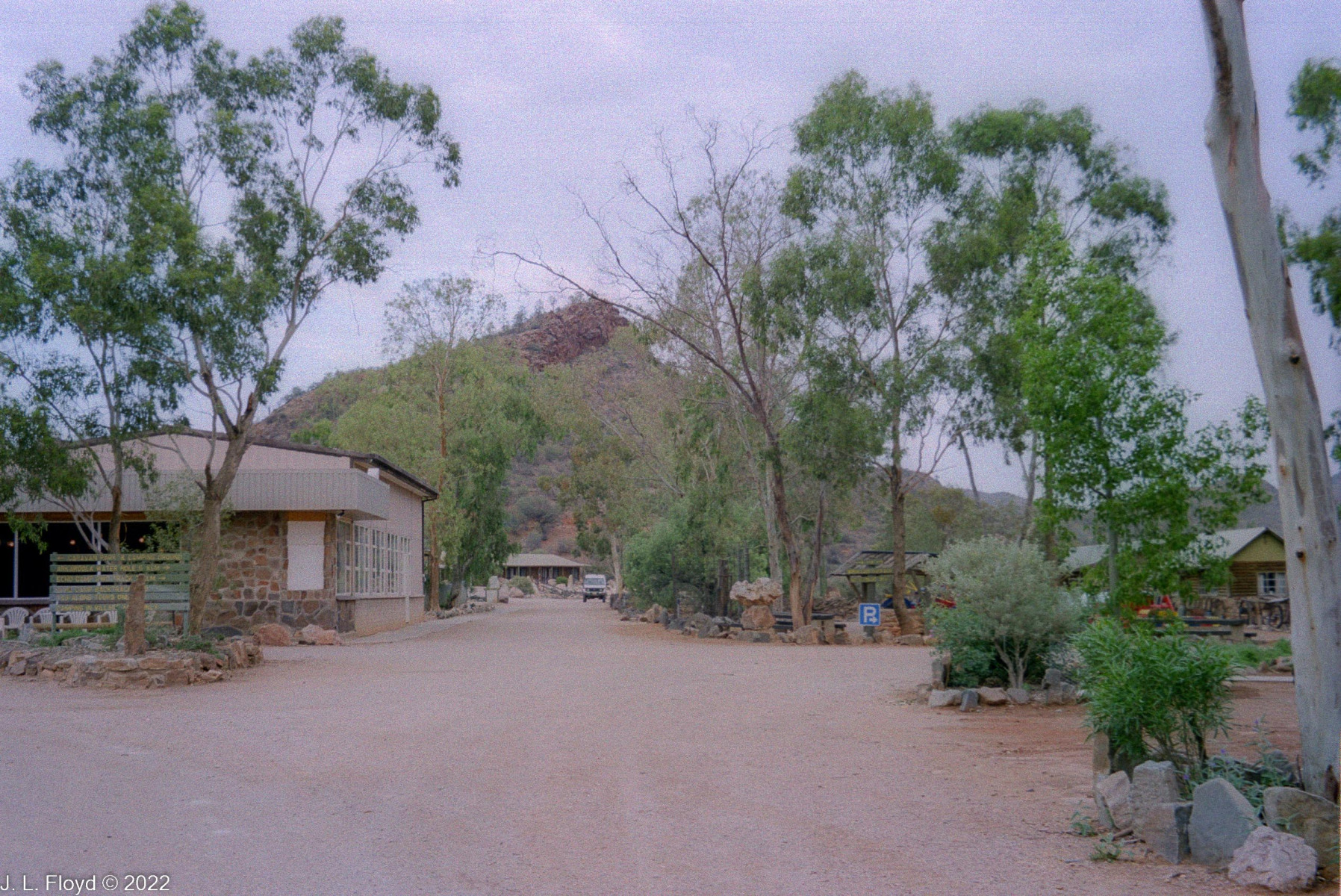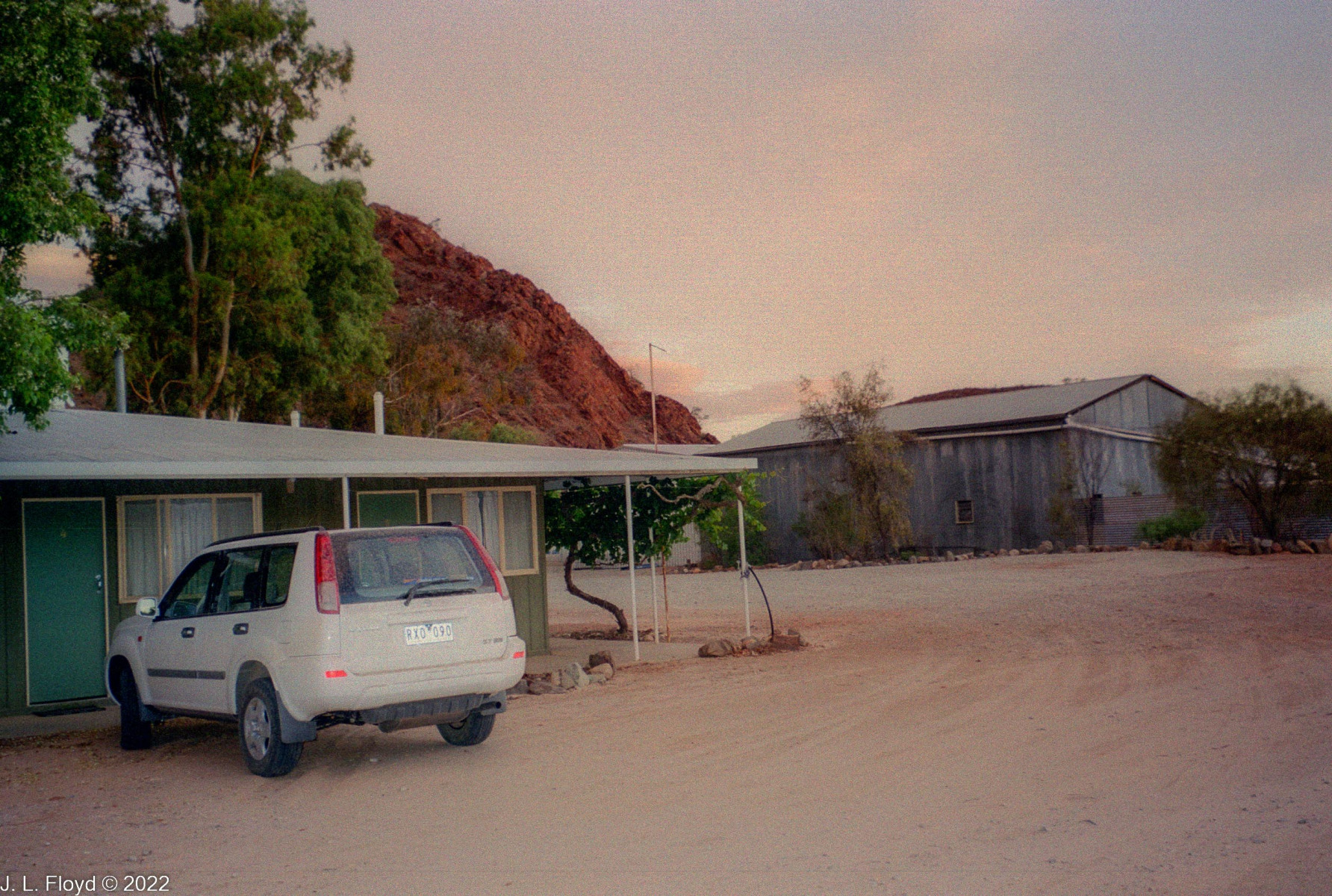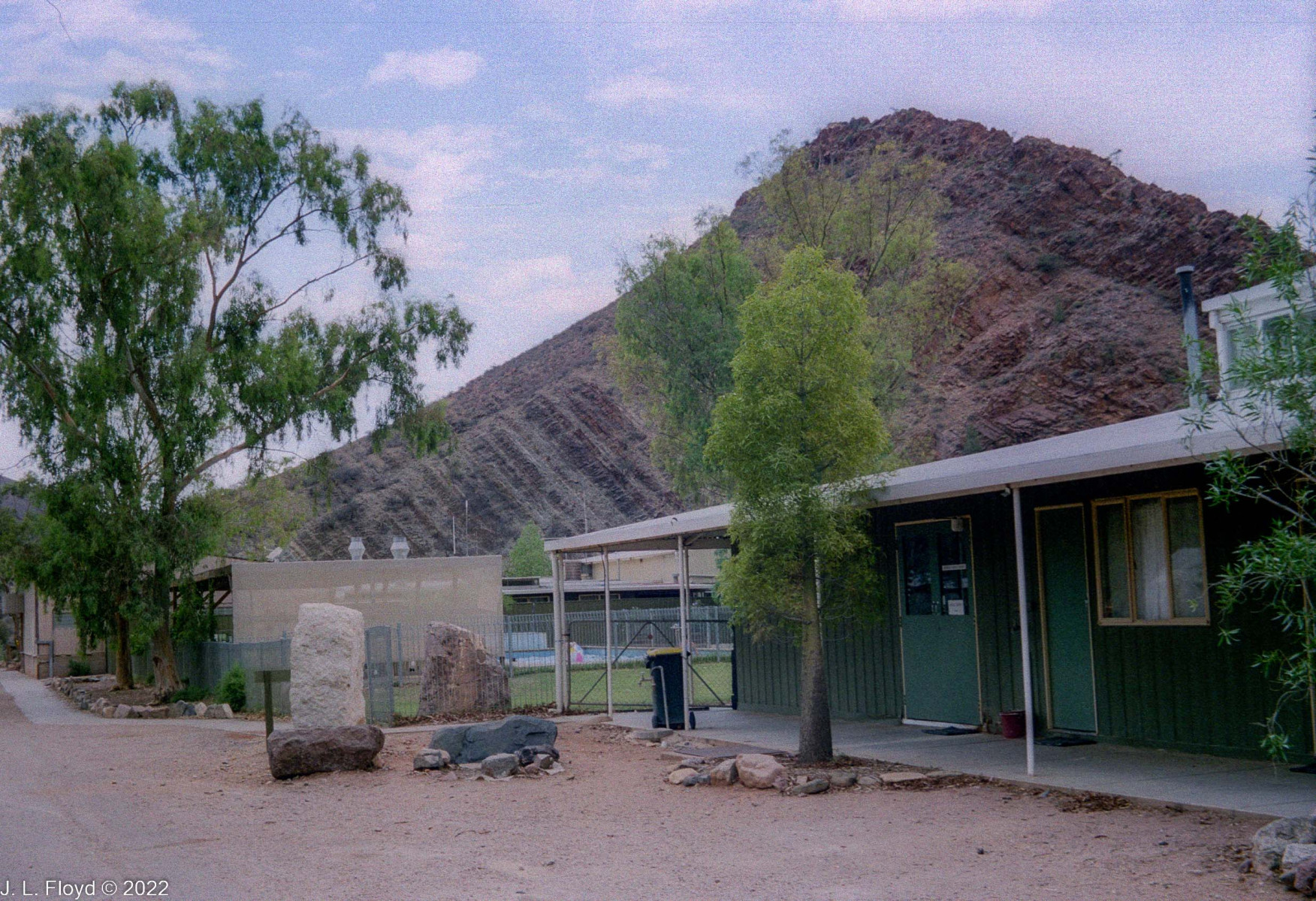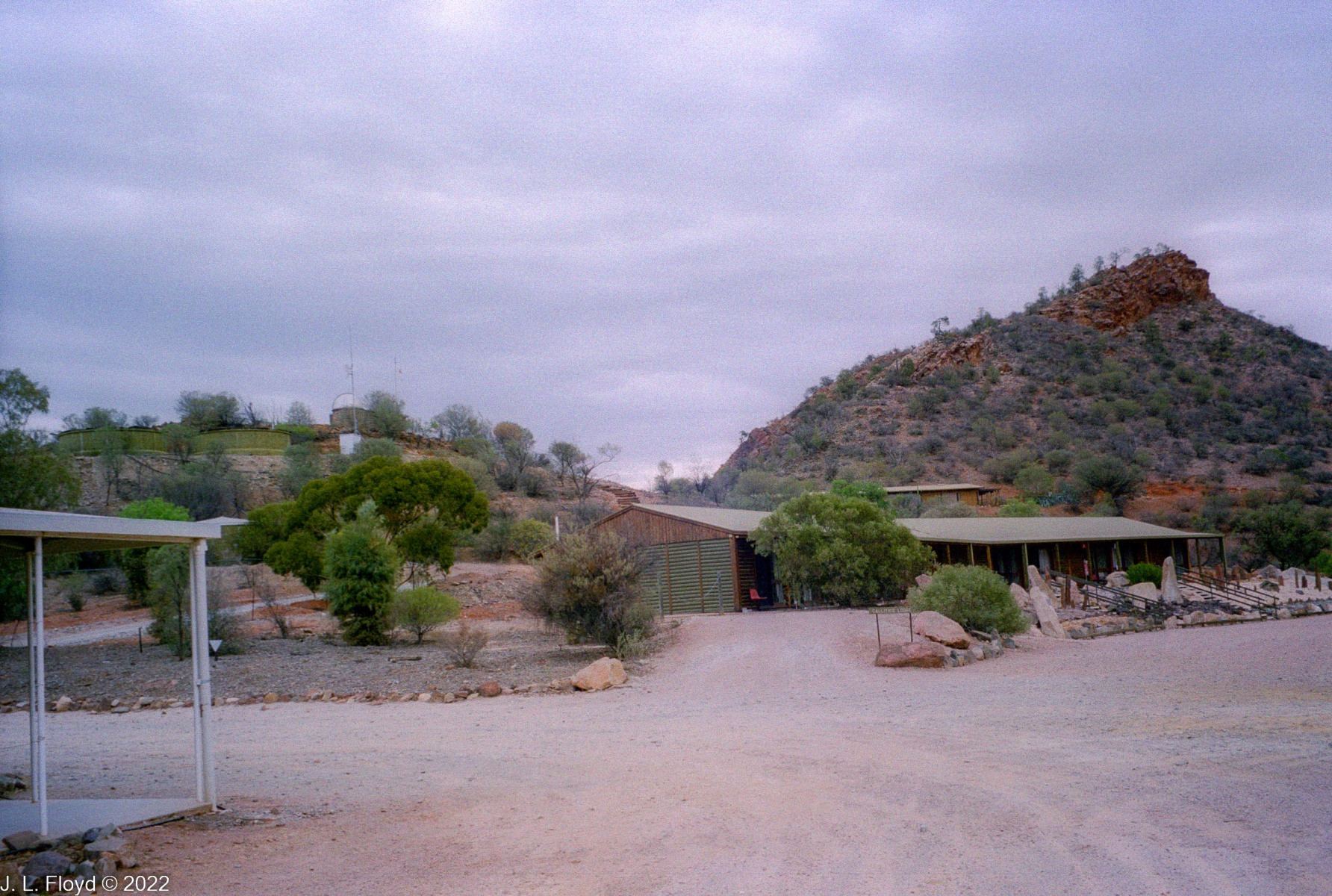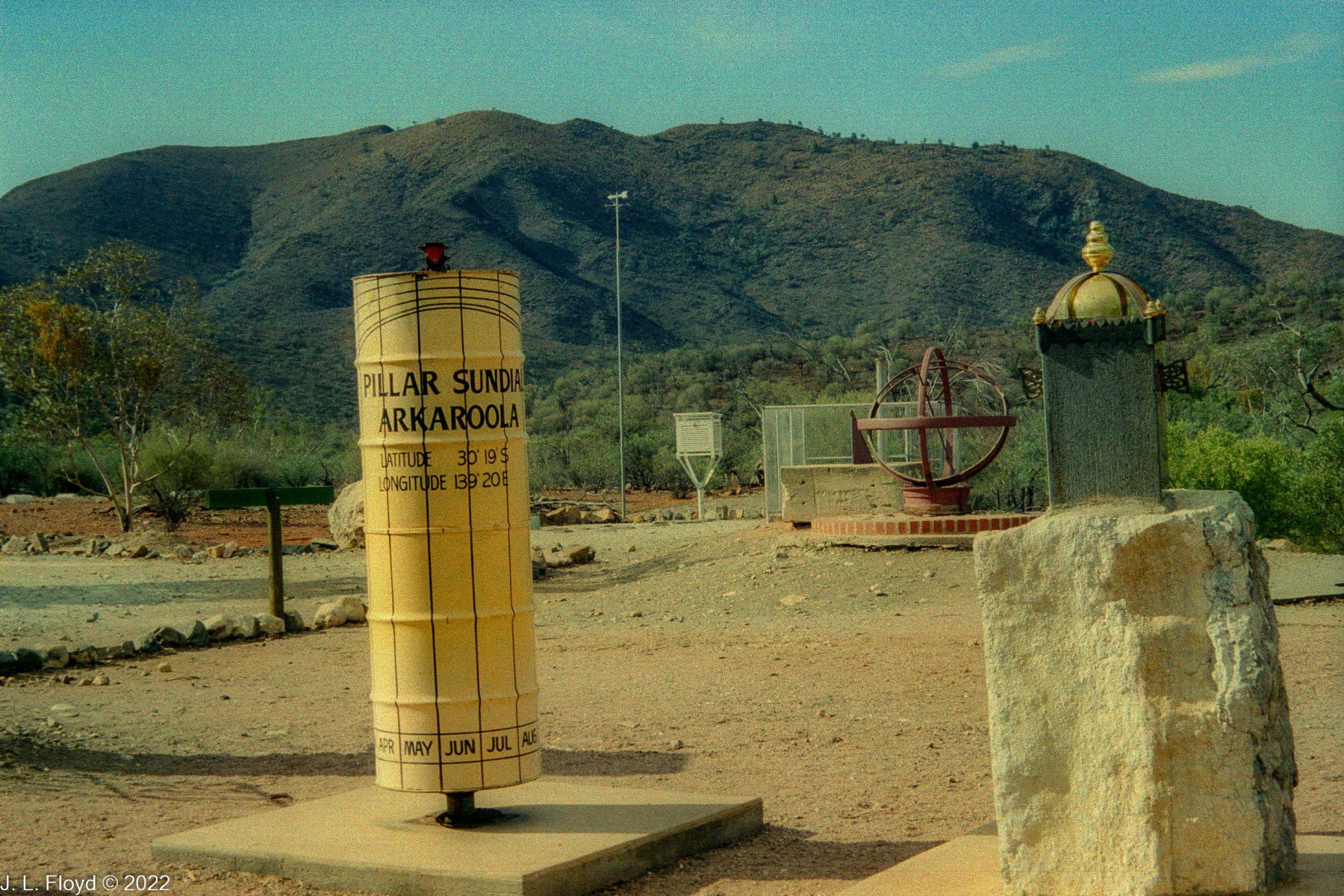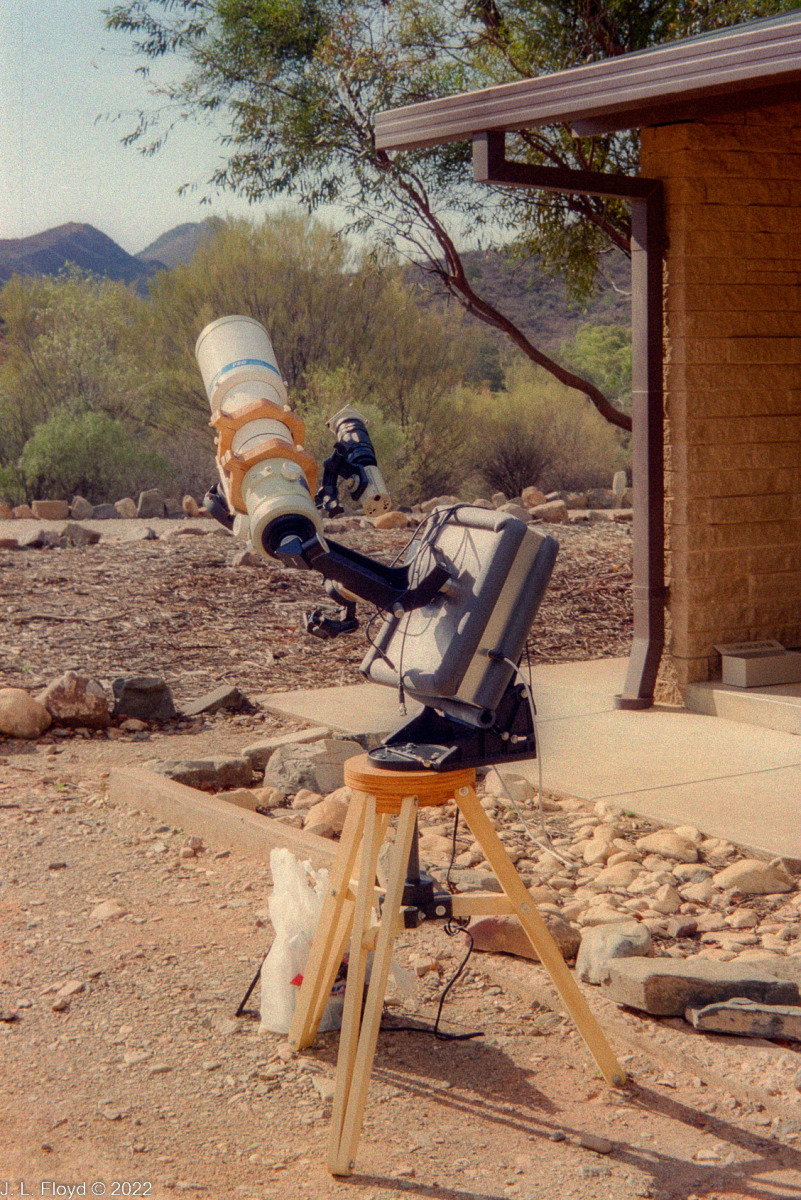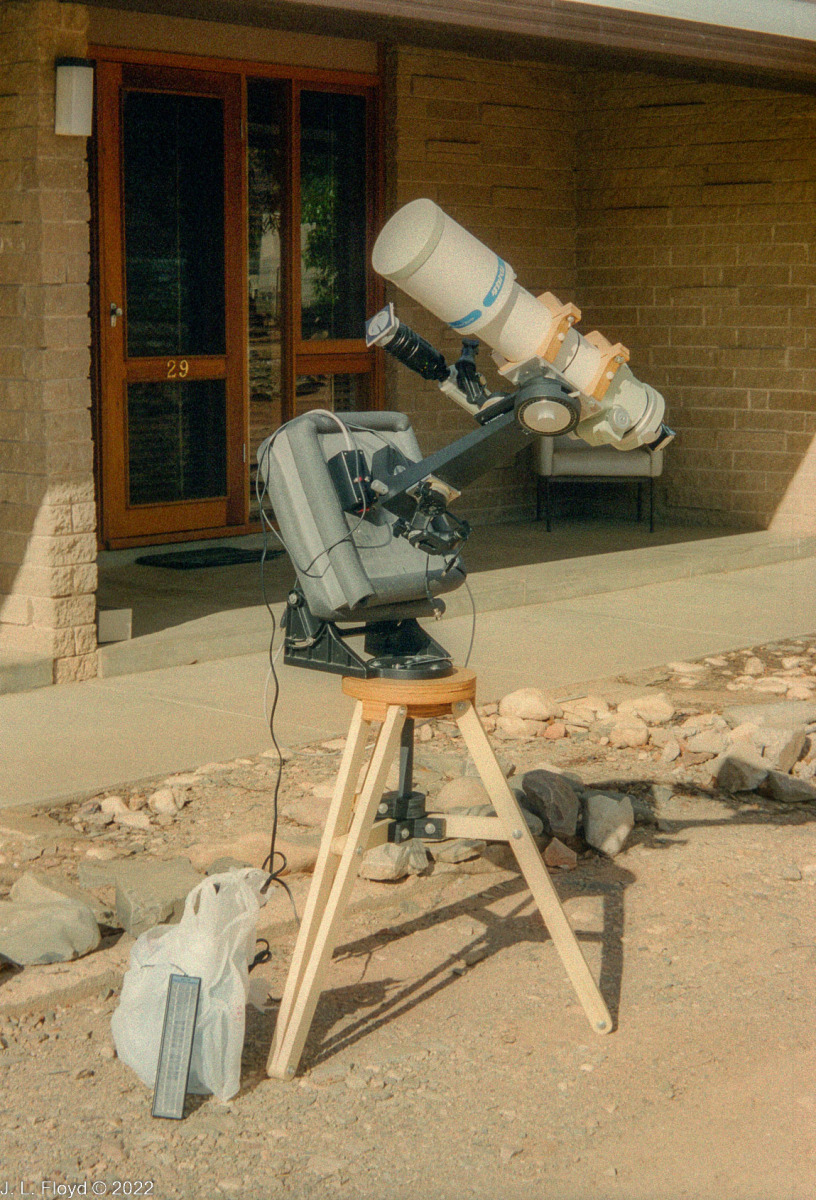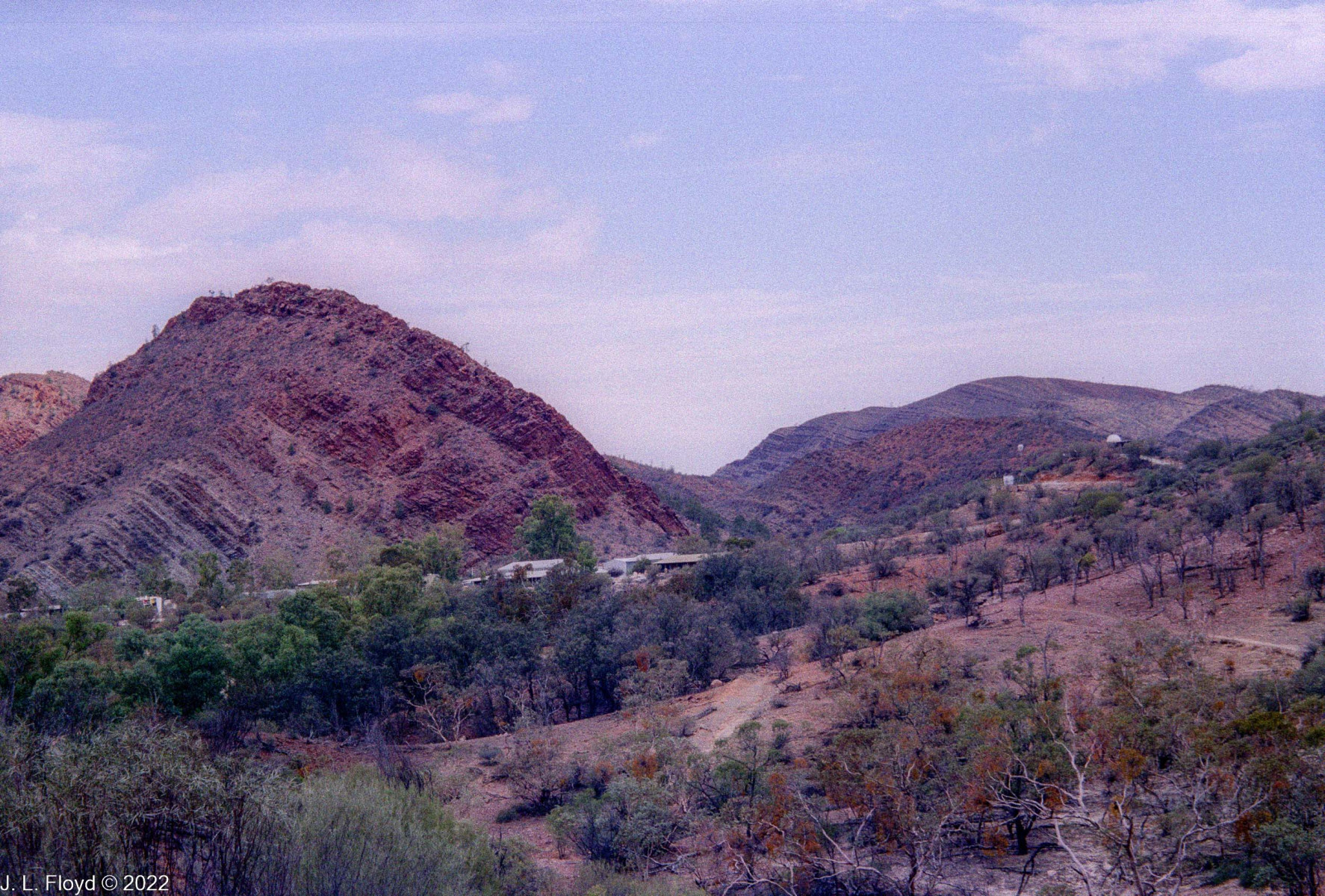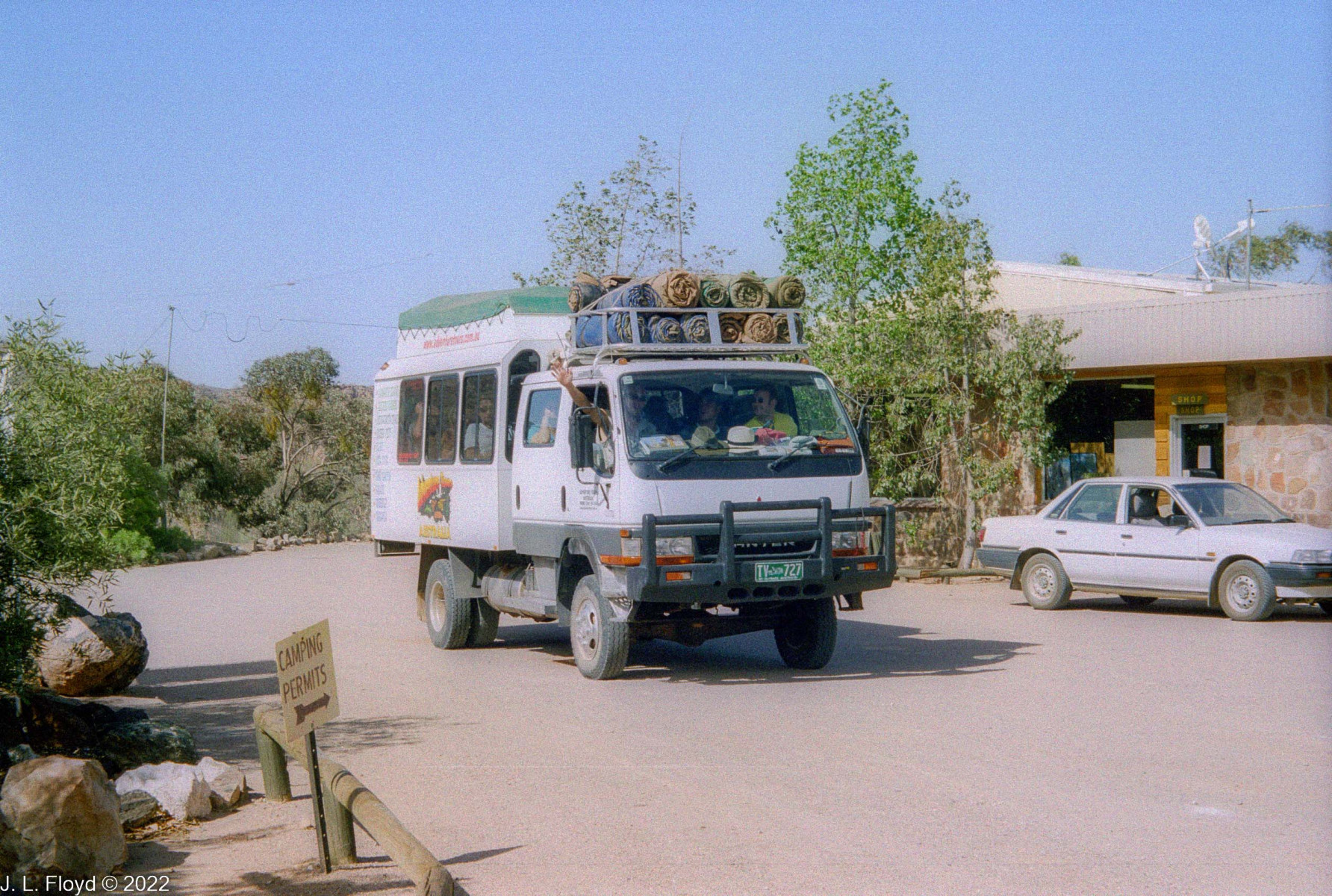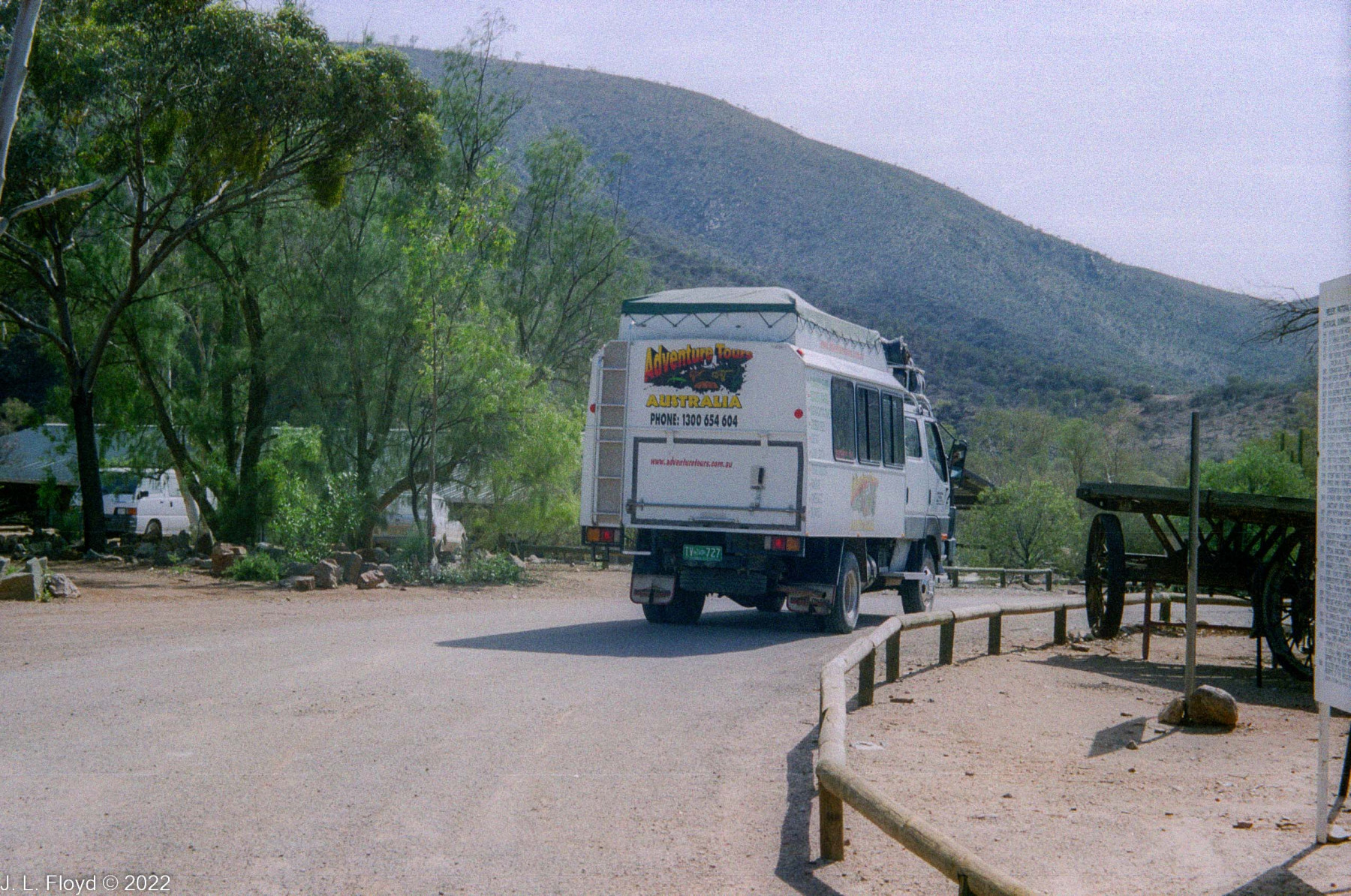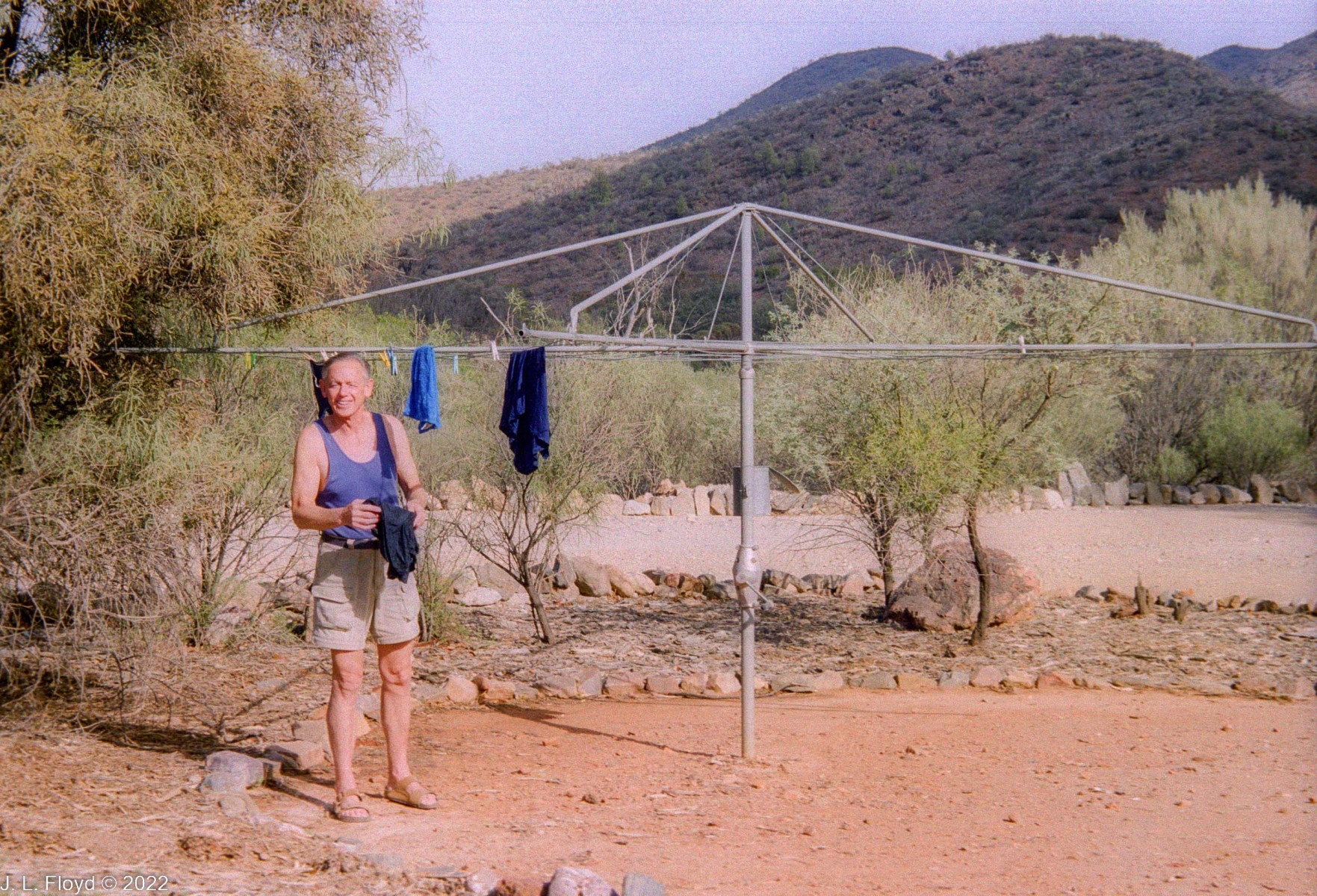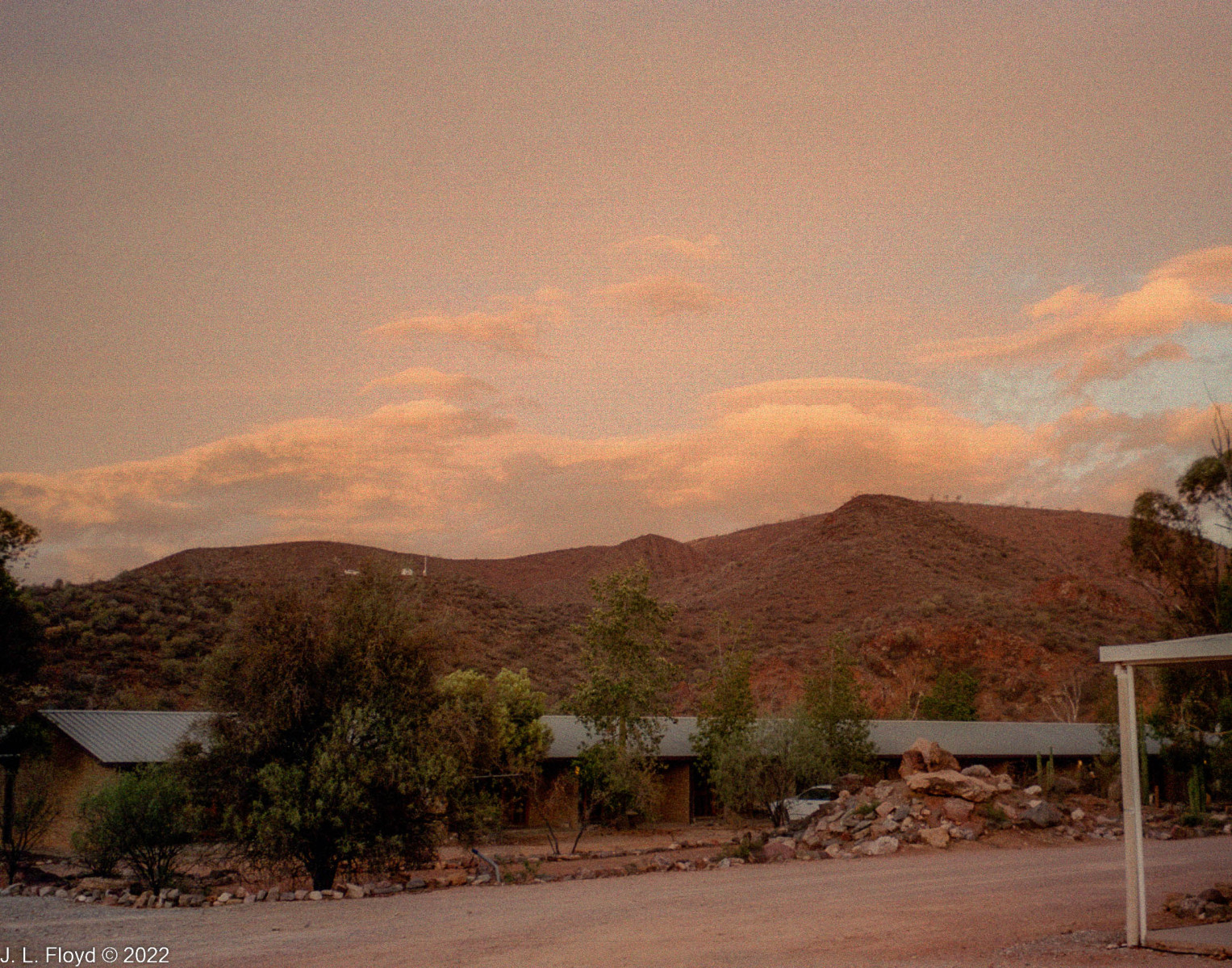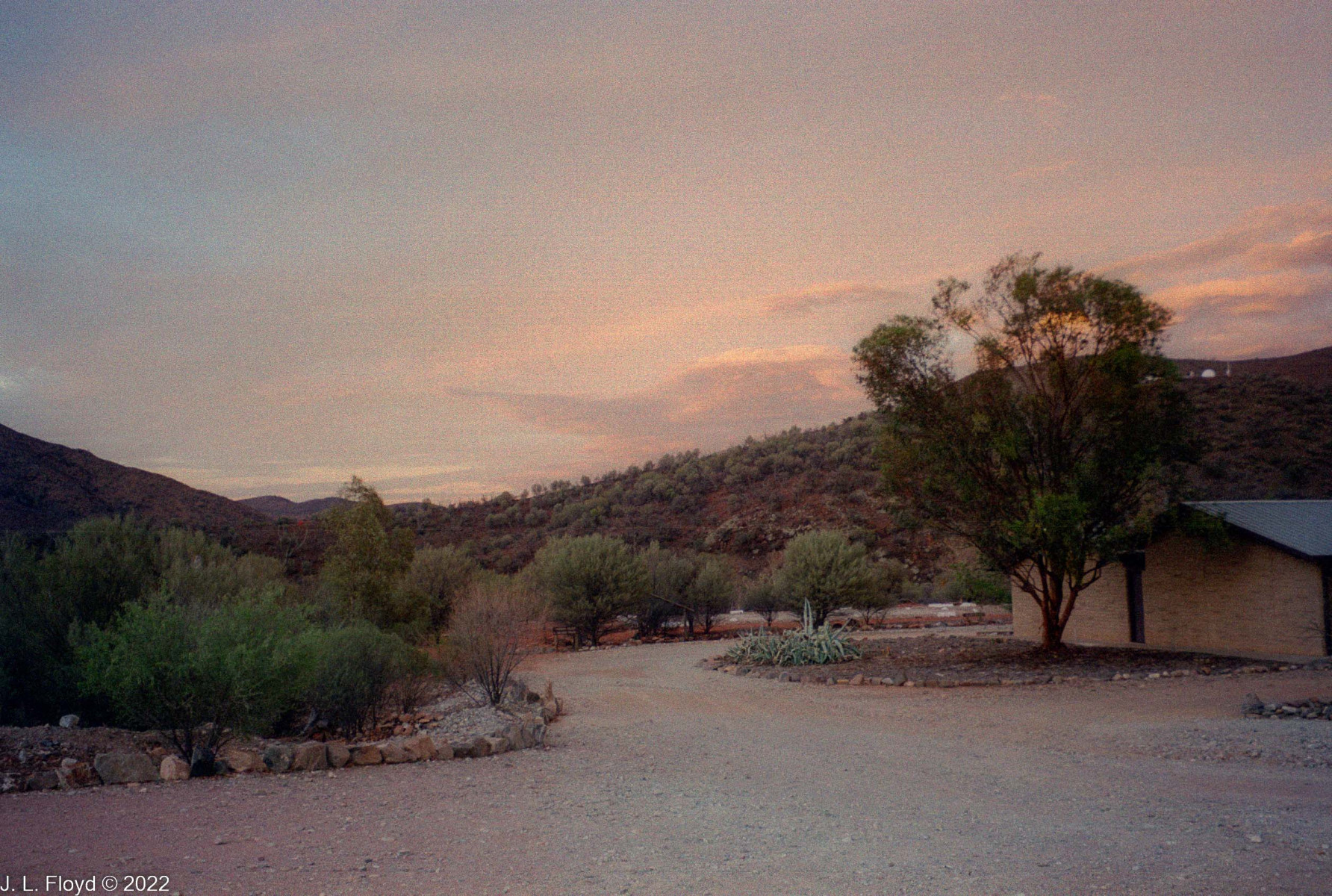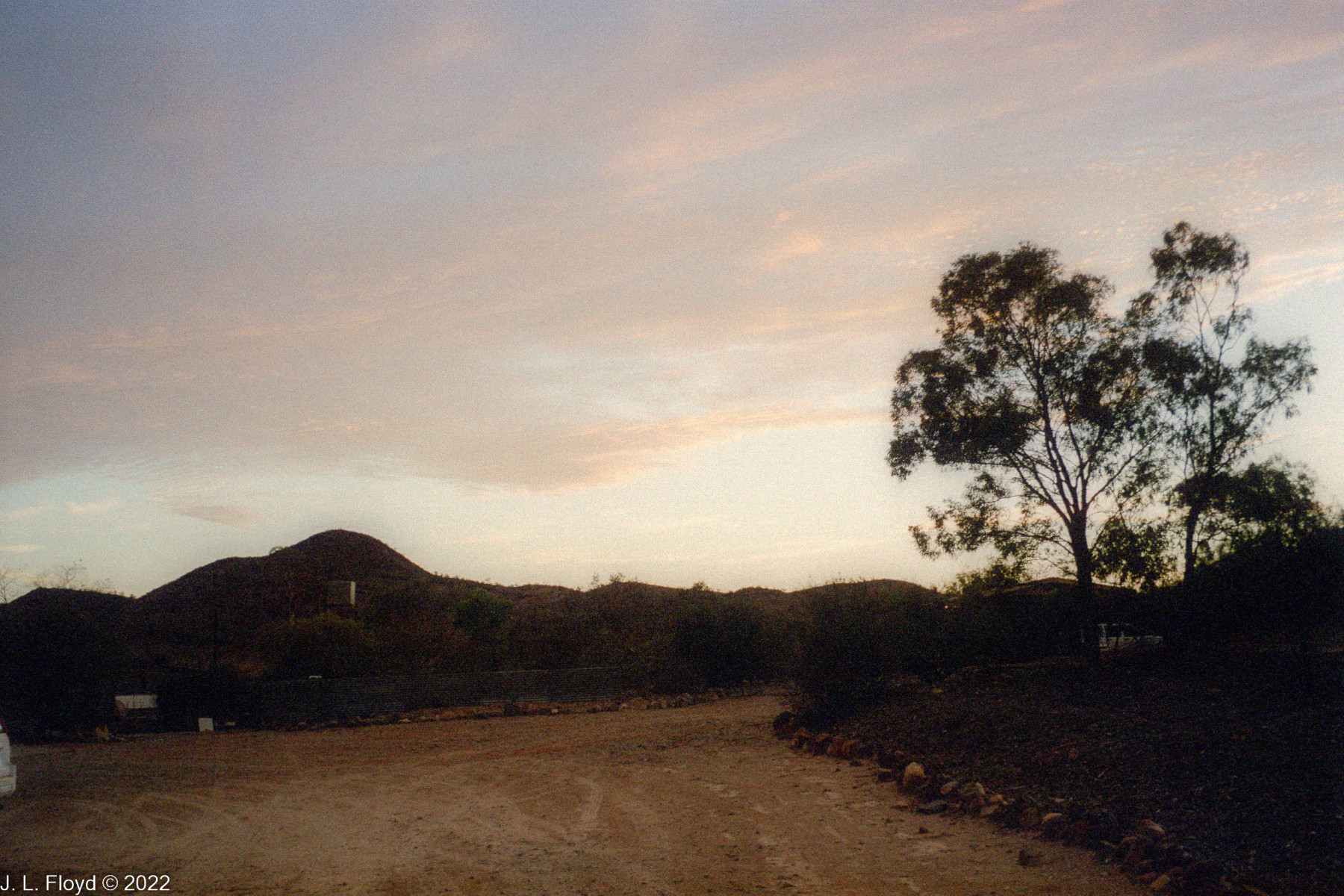On Day 3 of our stay in Arkaroola we were scheduled for the Ridgetop Tour, an outing that would take us into the wildest parts of the Flinders Range in 4-wheel drive vehicles. Before embarking on that excursion, though, Chuck and Elouise, feeling the need for more physical activity than riding around in trucks would provide, decided to do a morning bushwalk in the immediate vicinity of the resort, and I joined them.
The Ridgetop Tour is justly considered one of the premier experiences offered at Arkaroola Resort. It lasts about four and a half hours and goes through the most picturesque and rugged parts of the Flinders Range, taking the visitor to dizzying precipice lookouts and awe-inspiring gorges.
The Ridgetop Tour culminates in a climb to the top of Sillers Lookout, a vertiginous promontory near the northern end of the Flinders Range; it provides some stunning views of the different kinds of terrain encountered in this part of the world.
Since all of the next day, December 4, would be devoted to seeing the eclipse, December 3 was in effect our last full day at Arkaroola, so as a valedictory I’m going to present some of the scenes we encountered during our stay that I haven’t already posted.
Of particular interest to me was the telescope setup I encountered outside one of the lodges. It sat out there the entire time we were at Arkaroola, but I never saw anyone using it, and I never found out who owned it or made it. It was not a commercial setup; except for the telescope itself, it was obviously all homemade, by somebody who must have known what they were doing. They had cobbled together an equatorial mount, which consisted of a box presumably containing a motor and gears which would run the clock drive that turned the scope to follow the motion of the stars across the sky. The box was mounted at an angle suitable to match the latitude, so that the scope could be polar aligned. The scope was a Takahashi, I don’t know what model, but it was somewhere in the 100-110 mm range. Takahashis are among the highest quality refractors made, and they are quite expensive; this one would have cost upwards of $4,000 USD.
